
Comprehensive toxicology menu now with 14 CLIA 1 categorized moderate complexity assays.



Comprehensive toxicology menu now with 14 CLIA 1 categorized moderate complexity assays.


Toxicology screening solutions for physician offices, pain management, treatment centers and laboratories testing 200+ patient samples/mo.
MODERATE COMPLEXITY ASSAYS – FDA 510(K) CLEARED
6-acetylmorphine (6-AM Heroin metabolite)
Amphetamine
Barbiturates
Benzodiazepines
Benzoylecgonine (Cocaine metabolite)
Buprenorphine
Cannabinoids (THC)

EDDP (Methadone metabolite)
Fentanyl*
Methamphetamine
Opiates
Oxycodone
Phencyclidine (PCP)
Tramadol
Scan this QR code to view the ImmTox™ 270 product video


There are two simple ways to request information about the products and services found in Physicians Office Resource.
1. Go to www.PhysiciansOfficeResource.com and enter the four-digit reference number found next to the product or service into the search field, then request additional information, schedule a demo, or speak with a sales agent all with just a simple click of a button.
2. Find the Business Reply Card in this issue, circle the desired reference numbers, complete the form, and drop into any USPS mailbox. A representative will contact you as quickly as possible to answer your questions. www.PhysiciansOfficeResource.com
PUBLISHED BY Medical Education Resources, LLC
PUBLISHER
Aaron R. Medaris amedaris@physiciansofficeresource.com
CEO
Andrew C. Nimmo acnimmo@physiciansofficeresource.com
PRESIDENT
John D. Pasquale jpasquale@pharmaconnect.com
BUSINESS MANAGER
Marci J. Hills mhills@physiciansofficeresource.com
TRAVEL EDITOR
Brandi L. Brower
EDITORIAL BOARD
Michael Paquin, FHIMSS Barry Craig, MLT (NCA), CLC
STAFF WRITER
Dylan J. Chadwick
CREATIVE DIRECTOR PRODUCTION MANAGER
Jessica Elmer
Copyright ©2024
To continue your free subscription of Physicians Office Resource magazine, please fill out the Business Reply Card (BRC) located within this magazine and drop in any United States Post Office mailbox.
If you are a manufacturer of medical products or provide services to medical professionals and would like to advertise your products or services to the nation’s top physicians doing in-office testing, call 801-380-6094 or visit: POR.io for more information.


OLO® by Sight Diagnostics® is a state-of-the-art benchtop CBC analyzer that leverages AI, spectroscopy, and digital fluorescent microscopy to provide lab-grade results through full blood sample digitization. OLO offers 19 CBC parameters, including a 5-part white blood cell differential and 14 distinct flags. It handles venous and capillary blood samples with a minimum of 27 µL, and is suitable for children as young as three months. OLO’s unique cartridge-based technology, free from liquid reagents, and its internal controls offer easy maintenance, roomtemperature storage, reduced operational overhead, and IQCP- eligibility.
OLO is FDA 510(k) cleared for use in moderately complex laboratories. For full indications for use and safety information, please refer to the Quality and Compliance page at www.sighdx.com.
View Brochures, Videos & More at POR.io Enter Number 3901 in the Search Area
Ambulatory Surgery Centers Investment
The nuanced and specialized process of buying into an Ambulatory Surgery Center (ASC) is a venture often reserved for a select group of medical professionals, predominantly surgeons.
Leukemia and the Primary Care Physician
Leukemia is a complex and multifaceted hematologic malignancy that presents unique challenges in diagnosis, management, and patient care.
Desolation Hotel Lake Tahoe
My second stop, on my recent trip to California, was the serene Sierras of South Lake Tahoe, a destination of unparalleled natural beauty where stars and tech titans escape.


We recognize your passion for providing high quality care to patients displaying symptoms associated with respiratory infections, and we appreciate your efforts and resiliency working to reduce the rapid spread of these infections.
We are committed to providing high quality, molecular and antigen point-of-care tests for detecting the most common respiratory infections, so you can get the answers fast and your patients back to doing what they love.
Like you, we understand there is a patient behind every answer—and that’s what matters most.

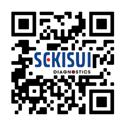

BY DR. SHAKEEL AHMED
PART 1, 2, AND 3 OF THIS SERIES PLEASE VISIT
The nuanced and specialized process of buying into an Ambulatory Surgery Center (ASC) is a venture often reserved for a select group of medical professionals, predominantly surgeons. Unlike general medical investments, ASCs offer a unique opportunity that combines clinical expertise with entrepreneurial acumen. The decision to invest in an ASC goes beyond financial metrics and requires an understanding of the clinical landscape, regulatory environment, and operational intricacies of outpatient surgical facilities.
Buying into an ASC is a decision that requires careful consideration and a thorough understanding of the landscape. As a prospective investor or medical professional, you’re entering a dynamic and evolving industry where outpatient surgeries are increasingly favored due to their efficiency and cost-effectiveness.
Long considered the pinnacle of business achievement in the field of surgery, it is the end goal that all surgeons aspire to reach. There is no higher peak to reach. There is no other milestone after this in your march to financial nirvana.
For the novice investor, ambulatory surgery centers are analogous to mini hospitals. They conduct elective outpatient surgeries in a safe and effective environment at half the cost of your local hospitals. Imagine the allure, both to patients and to insurance companies.
Before we discuss ownership and investment in ambulatory surgery centers, let me dispel a very commonly discussed myth in the industry: namely, that only surgeons can have ownership in surgery centers. The truth is that anyone, from general physicians to generic investors to the pizza boy can own shares in an ASC. A quick review of ASC owners around the country would reveal that the vast majority of these entities are owned by nonphysician corporations.
The key is to comply with all federal Anti-Kickback Statutes and safe harbors as an investor/owner. This in itself is a whole book of a topic, and I would strongly suggest partaking in legal advice and counsel should you as a nonphysician walk down this path. The path has its riches, so be open to it.
Having developed and operated close to a dozen ambulatory surgery centers over the last two decades, I can discuss the topic for hours, but to keep things succinct, here is a brief overview of ASC ownership. For a comprehensive discussion on the topic, please refer to my books on the topic, since a detailed opinion on this venture is beyond the scope of this article. Parts of this article are borrowed from chapters of my works.
Buying into an ASC is by far the most contentious step in the medical business. By this, I mean that it will make or break friendships and partnerships, test your patience and allegiances, perhaps even cost you referrals and consults, and add more headaches to your plate than you can ever handle. Nothing that is important is ever easy, but having said that, if this aspect of the business is navigated rightly and justly, the dividends are enormous. Why the contentiousness? What’s all the fuss about?
“Something happens when you feel ownership. You no longer act like a spectator or consumer because you’re an owner. Faith is at its best when it’s that way too. It’s best lived when it’s owned.”
—Bob Goff
Money. And power. The offerings of ASC ownership are an elective decision, and with them bring the utmost prestige and power in the field of healthcare. This means it may not be part of any strategy your partner or even your family anticipated when they signed on. It’s more than “to each his own,” because it represents an investment into a new anchor of allegiance. You’ll be getting more to own in the “to each his own” department and any of your PART 4 OF
associates or usual comrades-in-arms in the trenches of medicine may resent it if they’re not fellow owners.
You’ll be taking sides, with those who share ownership and against those who don’t. At first blush, this may not seem like a big deal.
After all, why should anyone care where you do your surgeries or procedures? As it turns out, a lot of folks do.
1. Physicians Who Don’t Have Ownership: There are many reasons some physicians may not take advantage of ownership in an ASC. Perhaps it’s a matter of liquidity at the moment, with the cost of purchasing shares coming at an inconvenient financial time. It could be that a physician has personal problems with the ones spearheading the ASC movement. It could be that there are discrete alignments of doctors and groups competing with each other, and ownership would necessitate crossing some vague loyalty line in the sand. Also, doing cases at a new place takes some work. There are the credentialing hassles, the additional meetings, and an ancillary staff different than what you’re accustomed to. There are different standardized forms, scheduling routines around a different set of doctors, and—again—that annoying feeling that you’re putting money into someone else’s pocket besides yours.
If you think doctors are beyond that pettiness, then you assume that book knowledge or a degree must in some way impact ethics. (Spoiler: it doesn’t.) Resentment at best and overt jealousy at worst—a nonowner knows that any time someone does a case at the ASC, it won’t help him or her at all. You can bet this spills over into an overt conviction not to do cases there, which breeds discord between the case-doers and the case- refusers—partners or not, siblings or not.
2. Physicians Who Fear Risk: One truism you will learn from ASC ownership is this: there are easier ways to make money in the medical profession than by just seeing patients. True, seeing patients is what makes you the doctor you are, but it sure is nice to have something else running in the background on autopilot that is generating income for you while you slug it out in the troughs of private practice. Those who haven’t learned this truism will spurn offers of ownership for fear of losing money, which begs the next truism: nothing ventured really does mean nothing gained. Sure, you could lose your investment, but typically the worst luck with an ASC is only that you might have to wait longer than anticipated for the return on it.
3. Hospital-Aligned or Hospital-Loyal Physicians: If a hospital owns a doctor’s practice and is not in a joint venture with the ASC, this requires no explanation. For private doctors, however, many develop an affinity for a particular hospital when they’ve been on staff for a while, served on its committees, or even taken part in its marketing and strategic decisions. This is particularly true when the hospital is a commu-
nity facility. They will double down on keeping business away from an upstart ASC and encourage their patients to choose, instead, their hospital of choice.
4. The Pariahs: Whether ownership is offered to everyone or not, there are just some doctors that the rest of the medical community—or the majority of ownership doctors—don’t like, for business, ethical, or even personal reasons. Blackball is an ugly word, but it will happen either overtly or discreetly, and usually for valid reasons. Typical reasons include too many malpractice claims, dishonesty, or a criminal or substance abuse history. (By the way, a valuable tip is that if someone is blackballed on the basis of religion, race, creed, or ethnicity, you should number yourself among the nonowners.)
5. Specialty-Specific Reasons for Nonparticipation: An ASC that does just cardiovascular or spinal procedures will not see any gynecologists wanting to buy in, and even if they did, the neuro/orthopedic and cardiac specialists wouldn’t want to sell to them, since it would dilute their profit return without their contributing cases to that return.
6. Psychological Exclusions: Here’s where the psychology really kicks in: if you have a cozy relationship with any of the above non-owning doctors, in the way of favorite consults to you or helping with call arrangements, your consults are going to go way down, and you may find that you lose your very convenient call-sharing with others in your specialty. It’s not personal; it’s just business. Well, isn’t that convenient! To you, it will be personal.
There will be curt pleasantries in the hallways of the hospital, glares from people you don’t even know, and even snide comments from the ancillary staff. It will become a true us-vs.them scenario, which should improve over time—and even more quickly if yet another ASC goes up, pushing you down the enemies list.
7. Nonphysicians: Lastly, would-be purchasers who are not physicians really can’t give back. Being a physician is a stipulation in 65 percent of all United States ASCs. (Ninety percent of United States ASCs have at least some physician ownership.) While physician-owned ASCs often utilize the services of management companies for their administration, in one type of ASC model they never relinquish equity to these companies.
This brings up an interesting consideration: how many different models of ASCs are out there?
According to the NIH, there are several types of ownership strategies in the ASC business:
1. Physician-Owned Solely: This is the majority of ASCs—64 percent. It gives maximum control to the physicians but also comes with the huge challenges of managing the facility itself and difficulty garnering leverage in contractual negotiations
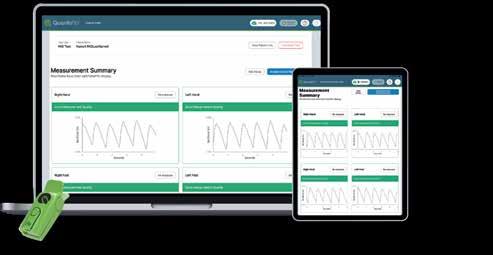



with third-party payers. As above, such an ASC may form a contract with a management company for help running the ASC, while not allowing any ownership into it by that company.
2. Physician-ASC Management Company Joint Venture: A joint venture, by definition, is ownership sharing—that is, co-owning. This means that the physicians may no longer have exclusivity in the control of the ASC at the highest levels. That belongs to the majority owner, and that could either be a physician, some of the physicians, or the corporate entity partnering with the doctors. Even if the physicians hold majority equity, the ASC can still benefit from the expertise offered by the minority-owned management company. Control, however, is usually not a worry, since this particular model of the joint venture was sought, initially, to take advantage of the management company’s administrative talents and decision-making wisdom. Only 4 percent of ASCs are of this type.
3. Physician-Hospital Joint Venture—The Faustian Bargain: This was inevitable, as minimally invasive surgical technology has transformed what used to be an overnight stay (or several days) in the hospital into same-day/outpatient surgery. The unwieldy operations of a large facility combined with losing market share in this niche service have had success in bringing hospitals into a joint venture approach with physicians, realizing “if you can’t beat ‘em, join ‘em.”
The ASC is also a streamlined method for screening (e.g., colonoscopy), surgical diagnostics (e.g., laparoscopy), and other short-stay procedures, which in the past have been steady sources of hospital revenue. Hospitals have seen this revenue being lost to more convenient standalone ASCs. Preventative care is always evolving and adding procedures that apply well to the ASC and not so well to hospitals who miss the boat.
The physician-hospital joint venture ASCs make up 24 percent of the cut of the ASC pie—the second largest after the solely physician-owned model. ASCs are beleaguered with construction costs, management policies, and—no small part of it all—contractual posturing with third-party payers, so having a hospital on your side eliminates much of the administrative drudgery with which the physicians must deal. Allowing better contracts with insurers due to hospital clout and partnering with a powerful hospital also cushions the physicians from financial instability. This venture also allows for physicians to be majority owners as well, as a final safeguard of their independence. One caveat: As the saying goes, “He who rides a tiger can never get off.” The physician owners in quite a few instances end up selling their autonomy and their souls to the larger hospital partners here.
4. Physician-Hospital-Management Company Three-Way Joint Venture: In this arrangement, each entity brings expertise and capabilities to benefit the whole. However, this is the

- Move from Waived to Non-Waived Testing with the help of experts - Expand testing, don’t worry about all the work- policies, fillable forms, e-signatures, calendar reminders included - Remote access – Lab Directors and Consultants manage compliance efficiently, save time, and travel expenses
Schedule a Free Demo Today!
For more information, call 888.534.2977 or email us at sales@myinspection.us
least likely arrangement seen in ASCs, since this model represents only 1 percent of the ASCs. There must be a reason (or many). The reason could involve the checks and balances when no one entity has majority interest; while checks and balances are a good thing on one level, on another level they may prove quite miserable when one of the three types of owners has a specific ambition not shared by the other two. (More likely, not shared with the other two.)
5. Hospital-Owned Solely: In this construct, there is no real physician ownership. Hospitals—and everything of which they consist—always need the physicians, so there are associations for true physician ownership. Keeping physicians happy means offering substantial physician participation, possibly linked to a comanagement contract and pro rata revenue remuneration.
This model is different from all of the other ones because it defies the conventional wisdom of involving physician ownership as a key ingredient. However, it demonstrates that creative associations with physicians, even without ownership, can mutually benefit all involved via physician leadership and their substantial involvement. Nevertheless, can cats and dogs really get along? Cats scratch and dogs bite, and no one is scratch-proof or bite-proof.
While the majority of ASCs are still solely owned by physicians, which gives physicians the benefit of maximum control in spite of also bringing the challenges of management and contracting, there is something of value to be considered within the hospital-owned model as long as a win-win situation can be offered.
With the changing paradigms of medicine and the field’s robust evolution, more types of ASCs will be invented. Some will work and predominate; others will fail and be discarded. Ultimately, the dollar, fiscal peace between physicians and the other types of owners, and win-win ownership strategies will determine the outcome of how the ASC pie is cut in our future. This assumes, of course, that the primary result continues to be excellent care because without that, no one wins—neither owners nor patients.
The principles of economics, purchasing, and ownership in an ambulatory surgery center are the same principles that apply to all commerce in general. That is, there is a golden ratio that has emerged from all of the arithmetic.
A business owner who is in the market to sell his entity or franchise would typically like to receive around three years’ worth of net income as the purchase price for that entity.
If you were in the market to buy a Subway restaurant and the Subway restaurant had a net income of $50,000 a year, a reasonable purchase price for that entity (minus any purchase of hard assets) would be $150,000. Obviously, an ASC is not a Subway restaurant, but the principles of commerce remain the same. Government entities are fully aware of these principles, and in order to avoid the appearance of kickbacks in the ASC business, certain laws have been created that guarantee these principles are followed in their concept.
Article continued at www.PhysiciansOfficeResource.com/articles

ABOUT THE AUTHOR:
Spanning two decades, Dr. Shakeel Ahmed, a gastroenterologist turned healthcare mogul, has transformed his vision into the Midwest’s leading Ambulatory Surgery Centers network. His dual expertise in medical administration and surgical execution-gained from years of frontline experience-has been pivotal in mastering the complexities of the healthcare sector. Dr. Ahmed’s notable contributions extend beyond the ASC sphere; he has played a key role in developing a comprehensive healthcare network, including a range of medical facilities, diagnostic centers, and surgical establishments across several states. His literary contributions includes 6 published books alongside hundreds of articles in prestigious national and international journals. He is a consultant for multiple governments on healthcare development and works as an advisor to various governments across four continents in the establishment of outpatient surgery centers.
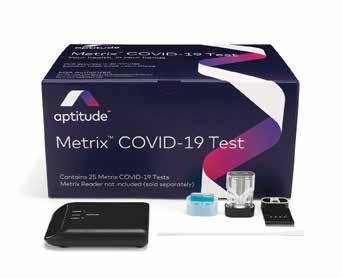
From Sekisui
The Metrix® COVID-19 is a novel technology includes clinical claims for symptomatic and asymptomatic individuals, along with dual-sample types for nasal or saliva, allowing for an enhanced point-of-care testing experience. The reader is compact and robust, it’s ideal for professional use in diverse locations, including clinics and mobile health units. It’s a maintenance free device with no calibration step required.
View Brochures, Videos & More at POR.io
Enter Number 4207 in the Search Area
WHY COMPROMISE? FAST AND RELIABLE RESULTS ARE NOW DELIVERED AT THE POINT OF CARE.
From LumiraDx
Introducing the next generation in point-of-care diagnostics. With a growing menu of tests, LumiraDx uses a simple process that allows for more time with your patients by using microfluidic technology that delivers results in minutes. Learn more about rapid COVID-19 diagnostic solutions for your physician office at LumiraDx.com.
View Brochures, Videos & More at POR.io
Enter Number 4208 in the Search Area


BE PREPARED FOR RESPIRATORY SEASONS WITH THE OSOM® COVID-19 ANTIGEN RAPID TEST
From Sekisui
The OSOM® COVID-19 Antigen Rapid Test is a lateral flow immunoassay that detects the SARS-CoV-2 nucleocapsid protein with a nasal swab in only 15 minutes at the point-of-care. The test is intended to be used by healthcare professionals or operators on patients suspected of COVID-19 within the first 7 days of symptom onset. The clinical performance compares favorably against polymerase chain reaction methodology, with a positive percent agreement of 95.1% and a negative percent agreement of 97%.
View Brochures, Videos & More at POR.io
Enter Number 4209 in the Search Area
OSOM® COVID-19 Antigen Rapid Test has not been FDA cleared or approved. It is authorized by FDA under an EUA for prescription use only. It has been authorized only for the detection of SARS-CoV-2 antigen, not for any other viruses or pathogens and is only authorized for the duration of the declaration that circumstances exist justifying the authorization of emergency use of in vitro diagnostics for detection and/or diagnosis of COVID-19 under Section 564(b)(1) of the Federal Food, Drug, and Cosmetic Act, 21 U.S.C S360bbb-3(b)(1), unless the authorization is terminated or revoked sooner.
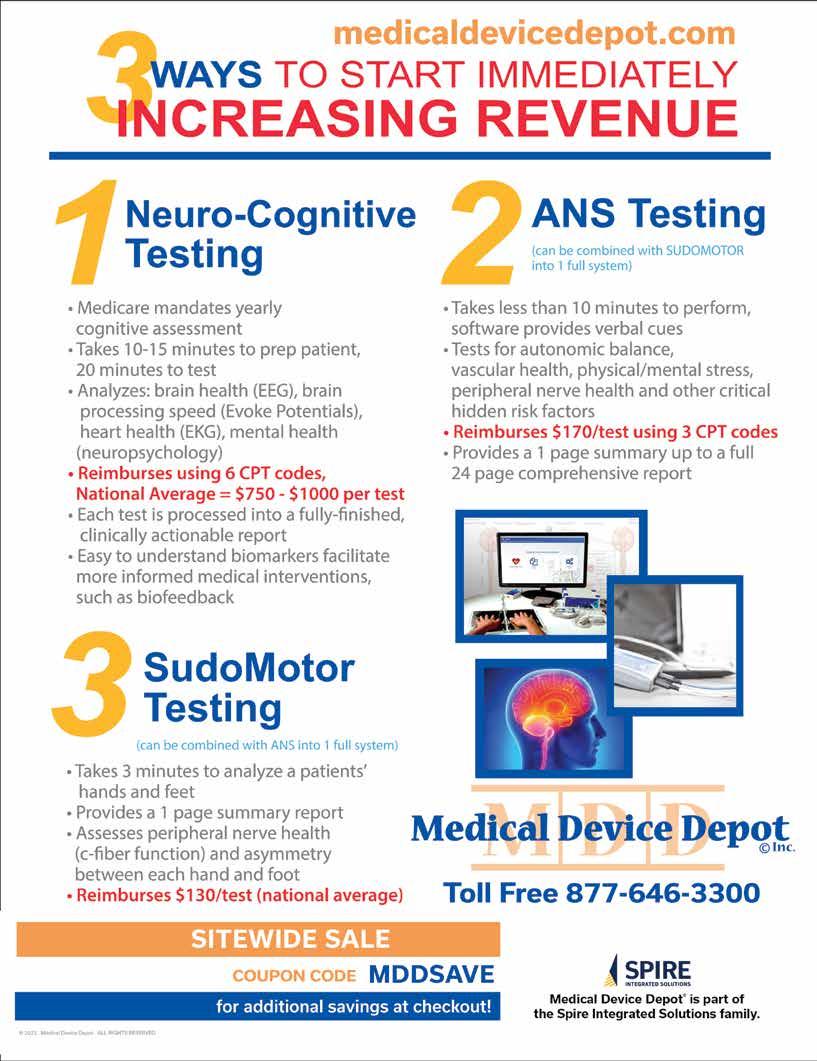

4213

From Siemens Healthineers
Siemens Healthineers DCA Vantage® and CLINITEK Status® family of analyzers provide Hemoglobin A1c (HbA1c) and albumin-tocreatinine ratio (ACR) testing at the point of care. Monitor glycemic control in patients with diabetes and screening for kidney disease in patients at-risk, in-office. Enable real-time consultation, eliminating loss to follow-up. Improve the patient experience and overall outcome by providing actionable results in minutes.
CLIA-waived: DCA HbA1c; CLINITEK Microalbumin 2 (ACR)
CLIA Moderate Complexity: DCA® Microalbumin/Creatinine (ACR)
View Brochures, Videos & More at POR.io
Enter Number 4213 in the Search Area
From Semler Scientific
QuantaFlo® PAD is an easy to use, accurate, point of care, non-invasive solution that aids in the early detection of peripheral arterial disease (PAD). This FDA cleared device can be administered by a medical aide in less than 5 minutes. As published in the Journal of Vascular Surgery and the American Journal of Preventive Medicine, QuantaFlo detected undiagnosed PAD in 31.6% of patients +65.1 QuantaFlo is portable and integrates with other technologies and platforms. It is ideal for both home and clinic environments.
1. Smolderen KG, Ameli O, Chaisson CE, Heath K, Mena-Hurtado C. Peripheral Artery Disease
Screening in the Community and 1-Year Mortality, Cardiovascular Events, and Adverse Limb Events, AJPM Focus (2022), https://doi.org/10.1016/j.focus.2022.100016
View Brochures, Videos & More at POR.io
Enter Number 4214 in the Search Area 4215
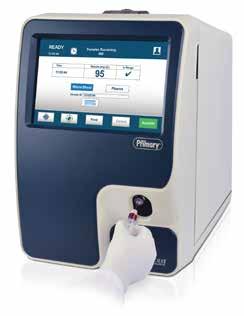

4214
From Nova Biomedical
The U.S. FDA has cleared Nova Primary as a blood glucose reference analyzer that fills the need for a new reference analyzer to replace the YSI STAT PLUS 2300 (YSI, Inc., Yellow Springs, OH). Manufacturers of blood glucose measuring devices and clinical diabetes researchers have relied on the YSI 2300 as a reference and correlation analyzer. However, YSI, Inc. no longer supports the analyzer, and its discontinuation has left a critical industry void. With today’s FDA clearance, Nova Primary from Nova Biomedical is now available in the U.S. and worldwide.
View Brochures, Videos & More at POR.io
Enter Number 4215 in the Search Area

(PAD) is an often silent condition where narrowed arteries reduce blood flow to the legs, causing symptoms like leg pain, numbness, and slow-healing wounds.
Diabetics
Smokers
Over age 65
DON’T LET PAD SNEAK UP ON YOU OR THESE PATIENTS.
50% report no symptoms, while those that do attribute their pain to arthritis or “old age”.
EASY
No Doppler or vascular anatomy knowledge necessary. Can be done in five minutes or less by any staff member. Non-invasive, patient-friendly test.
ACCURATE
Accuracy equal or better than Doppler ABI. Useful for diabetics with calcified arteries.
REIMBURSABLE

before they have a heart attack, stroke, or even die. PAD also leads to significant disability and reduced quality of

Great ROI: the typical internist has 800 Medicare patients, per ACP. Testing five patients per week can pay for the system in less than two months. CPT 93923, with a national average of $142/exam.

With over 40 years of experience in diagnostic ultrasound, Newman Medical is a trusted leader in vascular testing solutions Newman's ABI-Q rapid-test system epitomizes their commitment to pioneering technology. Built on integrity and expertise, count on Newman Medical for precise, rapid, and reliable vascular testing solutions
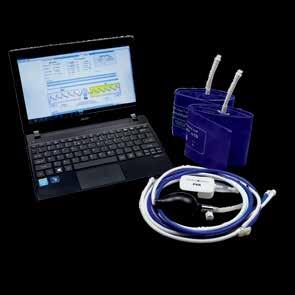


Indication and Limitations of Use
Indication: Mounjaro (tirzepatide) is indicated as an adjunct to diet and exercise to improve glycemic control in adults with type 2 diabetes mellitus. Limitations of Use: Mounjaro has not been studied in patients with a history of pancreatitis. Mounjaro is not indicated for use in patients with type 1 diabetes mellitus.
WARNING: RISK OF THYROID C-CELL TUMORS
In both male and female rats, tirzepatide causes dose-dependent and treatment-duration-dependent thyroid C-cell tumors at clinically relevant exposures. It is unknown whether Mounjaro causes thyroid C-cell tumors, including medullary thyroid carcinoma (MTC), in humans as human relevance of tirzepatide-induced rodent thyroid C-cell tumors has not been determined.
Mounjaro is contraindicated in patients with a personal or family history of MTC or in patients with Multiple Endocrine Neoplasia syndrome type 2 (MEN 2). Counsel patients regarding the potential risk for MTC with the use of Mounjaro and inform them of symptoms of thyroid tumors (e.g., a mass in the neck, dysphagia, dyspnea, persistent hoarseness). Routine monitoring of serum calcitonin or using thyroid ultrasound is of uncertain value for early detection of MTC in patients treated with Mounjaro.
Mounjaro is contraindicated in patients with a personal or family history of MTC or in patients with MEN 2, and in patients with known serious hypersensitivity to tirzepatide or any of the excipients in Mounjaro. Serious hypersensitivity reactions including anaphylaxis and angioedema have been reported with Mounjaro.
Risk of Thyroid C-cell Tumors: Counsel patients regarding the potential risk for MTC with the use of Mounjaro and inform them of symptoms of thyroid tumors (e.g., a mass in the neck, dysphagia, dyspnea, persistent hoarseness). Routine monitoring of serum calcitonin or using thyroid ultrasound is of uncertain value for early detection of MTC in patients treated with Mounjaro. Such monitoring may increase the risk of unnecessary procedures, due to the low test specificity for serum calcitonin and a high background incidence of thyroid disease. Significantly elevated serum calcitonin values may indicate MTC and patients with MTC usually have calcitonin values >50 ng/L. If serum calcitonin is measured and found to be elevated, the patient should be further evaluated. Patients with thyroid nodules noted on physical examination or neck imaging should also be further evaluated.
Pancreatitis: Acute pancreatitis, including fatal and non-fatal hemorrhagic or necrotizing pancreatitis, has been observed in patients treated with GLP-1 receptor agonists. Pancreatitis has been reported in Mounjaro clinical trials. Mounjaro has not been studied in patients with a prior history of pancreatitis. It is unknown if patients with a history of pancreatitis are at higher risk for development of pancreatitis on Mounjaro. Observe patients for signs and symptoms, including persistent severe abdominal pain sometimes radiating to the back, which may or may not be accompanied by vomiting. If pancreatitis is suspected, discontinue Mounjaro and initiate appropriate management.
Hypoglycemia with Concomitant Use of Insulin Secretagogues or Insulin: Concomitant use with an insulin secretagogue (e.g., sulfonylurea) or insulin may increase the risk of hypoglycemia, including severe hypoglycemia. The risk of hypoglycemia may be lowered by reducing the dose of sulfonylurea (or other concomitantly administered insulin secretagogue) or insulin. Inform patients using these concomitant medications of the risk of hypoglycemia and educate them on the signs and symptoms of hypoglycemia.
Hypersensitivity Reactions: Serious hypersensitivity reactions (e.g., anaphylaxis, angioedema) have been reported in patients treated with Mounjaro. If hypersensitivity reactions occur, discontinue use of Mounjaro; treat promptly per standard of care, and monitor until signs and symptoms resolve. Do not use in patients with a previous serious hypersensitivity to Mounjaro. Use caution in patients with a history of angioedema or anaphylaxis with a GLP-1 receptor agonist because it is unknown if such patients will be predisposed to these reactions with Mounjaro.

Acute Kidney Injury: Mounjaro has been associated with gastrointestinal adverse reactions, which include nausea, vomiting, and diarrhea. These events may lead to dehydration, which if severe could cause acute kidney injury. In patients treated with GLP-1 receptor agonists, there have been postmarketing reports of acute kidney injury and worsening of chronic renal failure, sometimes requiring hemodialysis. Some of these events have been reported in patients without known underlying renal disease. A majority of reported events occurred in patients who had experienced nausea, vomiting, diarrhea, or dehydration. Monitor renal function when initiating or escalating doses of Mounjaro in patients with renal impairment reporting severe adverse gastrointestinal reactions.
Severe Gastrointestinal Disease: Use of Mounjaro has been associated with gastrointestinal adverse reactions, sometimes severe. Mounjaro has not been studied in patients with severe gastrointestinal disease, including severe gastroparesis, and is therefore not recommended in these patients.
Diabetic Retinopathy Complications in Patients with a History of Diabetic Retinopathy: Rapid improvement in glucose control has been associated with a temporary worsening of diabetic retinopathy. Mounjaro has not been studied in patients with non-proliferative diabetic retinopathy requiring acute therapy, proliferative diabetic retinopathy, or diabetic macular edema. Patients with a history of diabetic retinopathy should be monitored for progression of diabetic retinopathy.
Acute Gallbladder Disease: In clinical trials, acute gallbladder disease was reported by 0.6% of Mounjaro-treated patients and 0% of placebo-treated patients. If cholelithiasis is suspected, gallbladder diagnostic studies and appropriate clinical follow-up are indicated.
The most common adverse reactions reported in ≥5% of Mounjaro-treated patients in placebo-controlled trials were nausea, diarrhea, decreased appetite, vomiting, constipation, dyspepsia, and abdominal pain.
Drug Interactions: When initiating Mounjaro, consider reducing the dose of concomitantly administered insulin secretagogues (such as sulfonylureas) or insulin to reduce the risk of hypoglycemia. Mounjaro delays gastric emptying, and thereby has the potential to impact the absorption of concomitantly administered oral medications, so caution should be exercised.
Pregnancy: Limited data on Mounjaro use in pregnant women are available to inform on drug-associated risk for major birth defects, miscarriage, or other adverse maternal or fetal outcomes. Based on animal reproduction studies, there may be risks to the fetus from exposure to tirzepatide. Use only if potential benefit justifies the potential risk to the fetus.
Lactation: There are no data on the presence of tirzepatide in human milk, the effects on the breastfed infant, or the effects on milk production. The developmental and health benefits of breastfeeding should be considered along with the mother’s clinical need for Mounjaro and any potential adverse effects on the breastfed infant from Mounjaro or from the underlying maternal condition.
Females of Reproductive Potential: Advise females using oral hormonal contraceptives to switch to a non-oral contraceptive method, or add a barrier method of contraception for 4 weeks after initiation and for 4 weeks after each dose escalation.
Pediatric Use: Safety and effectiveness of Mounjaro have not been established and use is not recommended in patients less than 18 years of age.
Please see Brief Summary of Prescribing Information on following pages. Please see Instructions for Use included with the pen.
TR HCP ISI 23MAY2023
Mounjaro® (tirzepatide) Brief Summary: Consult the package insert for complete prescribing information.
INDICATIONS AND USAGE Mounjaro® is a glucose-dependent insulinotropic polypeptide (GIP) receptor and glucagon-like peptide-1 (GLP-1) receptor agonist indicated as an adjunct to diet and exercise to improve glycemic control in adults with type 2 diabetes mellitus. Limitations of Use: Mounjaro has not been studied in patients with a history of pancreatitis. Mounjaro is not indicated for use in patients with type 1 diabetes mellitus.
WARNING: RISK OF THYROID C-CELL TUMORS
In both male and female rats, tirzepatide causes dose-dependent and treatmentduration-dependent thyroid C-cell tumors at clinically relevant exposures. It is unknown whether Mounjaro causes thyroid C-cell tumors, including medullary thyroid carcinoma (MTC), in humans as human relevance of tirzepatide-induced rodent thyroid C-cell tumors has not been determined.
Mounjaro is contraindicated in patients with a personal or family history of MTC or in patients with Multiple Endocrine Neoplasia syndrome type 2 (MEN 2). Counsel patients regarding the potential risk for MTC with the use of Mounjaro and inform them of symptoms of thyroid tumors (e.g., a mass in the neck, dysphagia, dyspnea, persistent hoarseness). Routine monitoring of serum calcitonin or using thyroid ultrasound is of uncertain value for early detection of MTC in patients treated with Mounjaro.
CONTRAINDICATIONS: Mounjaro is contraindicated in patients with: A personal or family history of medullary thyroid carcinoma (MTC), in patients with Multiple Endocrine Neoplasia syndrome type 2 (MEN 2), and in patients with a known serious hypersensitivity to tirzepatide or any of the excipients in Mounjaro. Serious hypersensitivity reactions, including anaphylaxis and angioedema, have been reported with Mounjaro.
WARNINGS AND PRECAUTIONS:
Risk of Thyroid C-Cell Tumors: In both sexes of rats, tirzepatide caused a dose-dependent and treatment-duration-dependent increase in the incidence of thyroid C-cell tumors (adenomas and carcinomas) in a 2-year study at clinically relevant plasma exposures. It is unknown whether Mounjaro causes thyroid C-cell tumors, including medullary thyroid carcinoma (MTC), in humans as human relevance of tirzepatide-induced rodent thyroid C-cell tumors has not been determined. Mounjaro is contraindicated in patients with a personal or family history of MTC or in patients with MEN 2. Counsel patients regarding the potential risk for MTC with the use of Mounjaro and inform them of symptoms of thyroid tumors (e.g., a mass in the neck, dysphagia, dyspnea, persistent hoarseness). Routine monitoring of serum calcitonin or using thyroid ultrasound is of uncertain value for early detection of MTC in patients treated with Mounjaro. Such monitoring may increase the risk of unnecessary procedures, due to the low test specificity for serum calcitonin and a high background incidence of thyroid disease. Significantly elevated serum calcitonin values may indicate MTC and patients with MTC usually have calcitonin values >50 ng/L. If serum calcitonin is measured and found to be elevated, the patient should be further evaluated. Patients with thyroid nodules noted on physical examination or neck imaging should also be further evaluated.
Pancreatitis: Acute pancreatitis, including fatal and non-fatal hemorrhagic or necrotizing pancreatitis, has been observed in patients treated with GLP-1 receptor agonists. In clinical studies, 14 events of acute pancreatitis were confirmed by adjudication in 13 Mounjaro-treated patients (0.23 patients per 100 years of exposure) versus 3 events in 3 comparator-treated patients (0.11 patients per 100 years of exposure). Mounjaro has not been studied in patients with a prior history of pancreatitis. It is unknown if patients with a history of pancreatitis are at higher risk for development of pancreatitis on Mounjaro. After initiation of Mounjaro, observe patients carefully for signs and symptoms of pancreatitis (including persistent severe abdominal pain, sometimes radiating to the back and which may or may not be accompanied by vomiting). If pancreatitis is suspected, discontinue Mounjaro and initiate appropriate management.
Hypoglycemia with Concomitant Use of Insulin Secretagogues or Insulin: Patients receiving Mounjaro in combination with an insulin secretagogue (e.g., sulfonylurea) or insulin may have an increased risk of hypoglycemia, including severe hypoglycemia. The risk of hypoglycemia may be lowered by a reduction in the dose of sulfonylurea (or other concomitantly administered insulin secretagogue) or insulin. Inform patients using these concomitant medications of the risk of hypoglycemia and educate them on the signs and symptoms of hypoglycemia.
Hypersensitivity Reactions: Serious hypersensitivity reactions (e.g., anaphylaxis, angioedema) have been reported in patients treated with Mounjaro. If hypersensitivity reactions occur, discontinue use of Mounjaro; treat promptly per standard of care, and monitor until signs and symptoms resolve. Do not use in patients with a previous serious hypersensitivity reaction to tirzepatide or any of the excipients in Mounjaro.
Anaphylaxis and angioedema have been reported with GLP-1 receptor agonists. Use caution in patients with a history of angioedema or anaphylaxis with a GLP-1 receptor agonist because it is unknown whether such patients will be predisposed to these reactions with Mounjaro.
Acute Kidney Injury: Mounjaro has been associated with gastrointestinal adverse reactions, which include nausea, vomiting, and diarrhea. These events may lead to dehydration, which if severe could cause acute kidney injury.
In patients treated with GLP-1 receptor agonists, there have been postmarketing reports of acute kidney injury and worsening of chronic renal failure, which may sometimes require hemodialysis. Some of these events have been reported in patients without known
underlying renal disease. A majority of the reported events occurred in patients who had experienced nausea, vomiting, diarrhea, or dehydration. Monitor renal function when initiating or escalating doses of Mounjaro in patients with renal impairment reporting severe gastrointestinal adverse reactions.
Severe Gastrointestinal Disease: Use of Mounjaro has been associated with gastrointestinal adverse reactions, sometimes severe. Mounjaro has not been studied in patients with severe gastrointestinal disease, including severe gastroparesis, and is therefore not recommended in these patients.
Diabetic Retinopathy Complications in Patients with a History of Diabetic Retinopathy:
Rapid improvement in glucose control has been associated with a temporary worsening of diabetic retinopathy. Mounjaro has not been studied in patients with non-proliferative diabetic retinopathy requiring acute therapy, proliferative diabetic retinopathy, or diabetic macular edema. Patients with a history of diabetic retinopathy should be monitored for progression of diabetic retinopathy.
Acute Gallbladder Disease: Acute events of gallbladder disease such as cholelithiasis or cholecystitis have been reported in GLP-1 receptor agonist trials and post marketing. In Mounjaro placebo-controlled clinical trials, acute gallbladder disease (cholelithiasis, biliary colic, and cholecystectomy) was reported by 0.6% of Mounjaro-treated patients and 0% of placebo-treated patients. If cholelithiasis is suspected, gallbladder diagnostic studies and appropriate clinical follow-up are indicated.
ADVERSE REACTIONS
Clinical Trials Experience: Because clinical trials are conducted under widely varying conditions, adverse reaction rates observed in the clinical trials of a drug cannot be directly compared to rates in the clinical trials of another drug and may not reflect the rates observed in practice.
Pool of Two Placebo-Controlled Clinical Trials: The data in Table 1 are derived from 2 placebo-controlled trials (1 monotherapy trial [SURPASS-1] and 1 trial in combination with basal insulin with or without metformin [SURPASS-5]) in adult patients with type 2 diabetes mellitus. These data reflect exposure of 718 patients to Mounjaro and a mean duration of exposure to Mounjaro of 36.6 weeks. The mean age of patients was 58 years, 4% were 75 years or older and 54% were male. The population was 57% White, 27% Asian, 13% American Indian or Alaska Native, and 3% Black or African American; 25% identified as Hispanic or Latino ethnicity. At baseline, patients had type 2 diabetes mellitus for an average of 9.1 years with a mean HbA1c of 8.1%. As assessed by baseline fundoscopic examination, 13% of the population had retinopathy. At baseline, eGFR was ≥90 mL/min/1.73 m2 in 53%, 60 to 90 mL/min/1.73 m2 in 39%, 45 to 60 mL/min/1.73 m2 in 7%, and 30 to 45 mL/min/1.73 m2 in 1% of patients.
Pool of Seven Controlled Clinical Trials: Adverse reactions were also evaluated in a larger pool of adult patients with type 2 diabetes mellitus participating in seven controlled clinical trials which included two placebo-controlled trials (SURPASS-1 and -5), three trials of Mounjaro in combination with metformin, sulfonylureas, and/or SGLT2 inhibitors (SURPASS-2, -3, -4), and two additional trials conducted in Japan. In this pool, a total of 5119 adult patients with type 2 diabetes mellitus were treated with Mounjaro for a mean duration of 48.1 weeks. The mean age of patients was 58 years, 4% were 75 years or older and 58% were male. The population was 65% White, 24% Asian, 7% American Indian or Alaska Native, and 3% Black or African American; 38% identified as Hispanic or Latino ethnicity. At baseline, patients had type 2 diabetes mellitus for an average of 9.1 years with a mean HbA1c of 8.3%. As assessed by baseline fundoscopic examination, 15% of the population had retinopathy. At baseline, eGFR was ≥90 mL/min/1.73 m2 in 52%, 60 to 90 mL/min/1.73 m2 in 40%, 45 to 60 mL/min/1.73 m2 in 6%, and 30 to 45 mL/min/1.73 m2 in 1% of patients.
Common Adverse Reactions: In the pool of placebo-controlled trials, the following adverse reactions were reported in ≥5% of Mounjaro-treated adult patients with type 2 diabetes mellitus (excluding hypoglycemia): (frequencies listed, respectively, as: placebo [N=235]; 5 mg [N=237]; 10 mg [N=240]; 15 mg [N=241]): nausea (4%, 12%, 15%, 18%), diarrhea (9%, 12%, 13%, 17%), decreased appetite (1%, 5%, 10%, 11%), vomiting (2%, 5%, 5%, 9%), constipation (1%, 6%, 6%, 7%), dyspepsia (3%, 8%, 8%, 5%), and abdominal pain (4%, 6%, 5%, 5%). Percentages reflect the number of patients who reported at least 1 occurrence of the adverse reaction. In the pool of seven clinical trials, the types and frequency of common adverse reactions, not including hypoglycemia, were similar.
Gastrointestinal Adverse Reactions: In the pool of placebo-controlled trials, gastrointestinal adverse reactions occurred more frequently among patients receiving Mounjaro than placebo (placebo 20.4%, Mounjaro 5 mg 37.1%, Mounjaro 10 mg 39.6%, Mounjaro 15 mg 43.6%). More patients receiving Mounjaro 5 mg (3.0%), Mounjaro 10 mg (5.4%), and Mounjaro 15 mg (6.6%) discontinued treatment due to gastrointestinal adverse reactions than patients receiving placebo (0.4%). The majority of reports of nausea, vomiting, and/or diarrhea occurred during dose escalation and decreased over time.
The following gastrointestinal adverse reactions were reported more frequently in Mounjaro-treated patients than placebo-treated patients (frequencies listed, respectively, as: placebo; 5 mg; 10 mg; 15 mg): eructation (0.4%, 3.0%, 2.5%, 3.3%), flatulence (0%, 1.3%, 2.5%, 2.9%), gastroesophageal reflux disease (0.4%, 1.7%, 2.5%, 1.7%), abdominal distension (0.4%, 0.4%, 2.9%, 0.8%).
Other Adverse Reactions:
Hypoglycemia: Hypoglycemia adverse reactions in placebo-controlled trials in adults with type 2 diabetes mellitus were as follows. For the 40-week monotherapy study (frequencies listed, respectively, as: placebo [N=115]; 5 mg [N=121]; 10 mg [N=119]; 15 mg [N=120]): blood glucose <54 mg/dL (1%, 0%, 0%, 0%), severe hypoglycemia (0%, 0%, 0%, 0%). For
the 40-week add-on to basal insulin with or without metformin study (placebo [N=120], 5 mg [N=116], 10 mg [N=119], 15 mg [N=120]): blood glucose <54 mg/dL (13%, 16%, 19%, 14%), severe hypoglycemia (0%, 0%, 2%, 1%). Data include events occurring during 4 weeks of treatment-free safety follow up. Events after introduction of a new glucoselowering treatment are excluded. Severe hypoglycemia was defined as episodes requiring the assistance of another person to actively administer carbohydrate, glucagon, or other resuscitative actions.
Hypoglycemia was more frequent when Mounjaro was used in combination with a sulfonylurea. In a clinical trial up to 104 weeks of treatment, when administered with a sulfonylurea, hypoglycemia (glucose level <54 mg/dL) occurred in 13.8%, 9.9%, and 12.8%, and severe hypoglycemia occurred in 0.5%, 0%, and 0.6% of patients treated with Mounjaro 5 mg, 10 mg, and 15 mg, respectively.
Heart Rate Increase: In the pool of placebo-controlled trials, treatment with Mounjaro resulted in a mean increase in heart rate of 2 to 4 beats per minute compared to a mean increase of 1 beat per minute in placebo-treated patients. Episodes of sinus tachycardia, associated with a concomitant increase from baseline in heart rate of ≥15 beats per minute, also were reported in 4.3%, 4.6%, 5.9% and 10% of subjects treated with placebo, Mounjaro 5 mg, 10 mg, and 15 mg, respectively. For patients enrolled in Japan, these episodes were reported in 7% (3/43), 7.1% (3/42), 9.3% (4/43), and 23% (10/43) of patients treated with placebo, Mounjaro 5 mg, 10 mg, and 15 mg, respectively. The clinical relevance of heart rate increases is uncertain.
Hypersensitivity Reactions: Hypersensitivity reactions have been reported with Mounjaro in the pool of placebo-controlled trials, sometimes severe (e.g., urticaria and eczema); hypersensitivity reactions were reported in 3.2% of Mounjaro-treated patients compared to 1.7% of placebo-treated patients.
In the pool of seven clinical trials, hypersensitivity reactions occurred in 106/2,570 (4.1%) of Mounjaro-treated patients with anti-tirzepatide antibodies and in 73/2,455 (3.0%) of Mounjaro-treated patients who did not develop anti-tirzepatide antibodies.
Injection Site Reaction: In the pool of placebo-controlled trials, injection site reactions were reported in 3.2% of Mounjaro-treated patients compared to 0.4% of placebotreated patients.
In the pool of seven clinical trials, injection site reactions occurred in 119/2,570 (4.6%) of Mounjaro-treated patients with anti-tirzepatide antibodies and in 18/2,455 (0.7%) of Mounjaro-treated patients who did not develop anti-tirzepatide antibodies.
Acute Gallbladder Disease: In the pool of placebo-controlled clinical trials, acute gallbladder disease (cholelithiasis, biliary colic and cholecystectomy) was reported by 0.6% of Mounjaro-treated patients and 0% of placebo-treated patients.
Laboratory Abnormalities: Amylase and Lipase Increase: In the pool of placebo-controlled clinical trials, treatment with Mounjaro resulted in mean increases from baseline in serum pancreatic amylase concentrations of 33% to 38% and serum lipase concentrations of 31% to 42%. Placebo-treated patients had a mean increase from baseline in pancreatic amylase of 4% and no changes were observed in lipase. The clinical significance of elevations in lipase or amylase with Mounjaro is unknown in the absence of other signs and symptoms of pancreatitis.
Postmarketing Experience
The following adverse reactions have been reported during post-approval use of Mounjaro. Because these reactions are reported voluntarily from a population of uncertain size, it is not always possible to reliably estimate their frequency or establish a causal relationship to drug exposure.
Hypersensitivity : anaphylaxis, angioedema.
DRUG INTERACTIONS
Concomitant Use with an Insulin Secretagogue (e.g., Sulfonylurea) or with Insulin When initiating Mounjaro, consider reducing the dose of concomitantly administered insulin secretagogues (e.g., sulfonylureas) or insulin to reduce the risk of hypoglycemia.
Oral Medications:
Mounjaro delays gastric emptying, and thereby has the potential to impact the absorption of concomitantly administered oral medications. Caution should be exercised when oral medications are concomitantly administered with Mounjaro.
Monitor patients on oral medications dependent on threshold concentrations for efficacy and those with a narrow therapeutic index (e.g., warfarin) when concomitantly administered with Mounjaro.
Advise patients using oral hormonal contraceptives to switch to a non-oral contraceptive method, or add a barrier method of contraception for 4 weeks after initiation and for 4 weeks after each dose escalation with Mounjaro. Hormonal contraceptives that are not administered orally should not be affected.
USE IN SPECIFIC POPULATIONS
Pregnancy: Risk Summary: Available data with Mounjaro use in pregnant women are insufficient to evaluate for a drug-related risk of major birth defects, miscarriage, or other adverse maternal or fetal outcomes. There are risks to the mother and fetus associated with poorly controlled diabetes in pregnancy. Based on animal reproduction studies, there may be risks to the fetus from exposure to tirzepatide during pregnancy. Mounjaro should be used during pregnancy only if the potential benefit justifies the potential risk to the fetus. In pregnant rats administered tirzepatide during organogenesis, fetal growth reductions and fetal abnormalities occurred at clinical exposure in maternal rats based on AUC. In rabbits administered tirzepatide during organogenesis, fetal growth reductions were observed at clinically relevant exposures based on AUC. These adverse embryo/fetal effects in animals coincided with pharmacological effects on maternal weight and food consumption. The
estimated background risk of major birth defects is 6–10% in women with pre-gestational diabetes with an HbA1c >7% and has been reported to be as high as 20–25% in women with an HbA1c >10%. The estimated background risk of miscarriage for the indicated population is unknown. In the U.S. general population, the estimated background risk of major birth defects and miscarriage in clinically recognized pregnancies is 2–4% and 15–20%, respectively. Clinical Considerations: Disease-Associated Maternal and/or Embryo/Fetal Risk: Poorly controlled diabetes in pregnancy increases the maternal risk for diabetic ketoacidosis, pre-eclampsia, spontaneous abortions, preterm delivery, and delivery complications. Poorly controlled diabetes increases the fetal risk for major birth defects, stillbirth, and macrosomia-related morbidity. Data: Animal Data: In pregnant rats given twice weekly subcutaneous doses of 0.02, 0.1, and 0.5 mg/kg tirzepatide (0.03-, 0.07-, and 0.5-fold the MRHD of 15 mg once weekly based on AUC) during organogenesis, increased incidences of external, visceral, and skeletal malformations, increased incidences of visceral and skeletal developmental variations, and decreased fetal weights coincided with pharmacologically-mediated reductions in maternal body weights and food consumption at 0.5 mg/kg. In pregnant rabbits given once weekly subcutaneous doses of 0.01, 0.03, or 0.1 mg/kg tirzepatide (0.01-, 0.06, and 0.2-fold the MRHD) during organogenesis, pharmacologically-mediated effects on the gastrointestinal system resulting in maternal mortality or abortion in a few rabbits occurred at all dose levels. Reduced fetal weights associated with decreased maternal food consumption and body weights were observed at 0.1 mg/kg. In a pre- and post-natal study in rats administered subcutaneous doses of 0.02, 0.10, or 0.25 mg/kg tirzepatide twice weekly from implantation through lactation, F1 pups from F0 maternal rats given 0.25 mg/kg tirzepatide had statistically significant lower mean body weight when compared to controls from post-natal day 7 through post-natal day 126 for males and post-natal day 56 for females.
Lactation: Risk Summary: There are no data on the presence of tirzepatide in animal or human milk, the effects on the breastfed infant, or the effects on milk production. The developmental and health benefits of breastfeeding should be considered along with the mother’s clinical need for Mounjaro and any potential adverse effects on the breastfed infant from Mounjaro or from the underlying maternal condition.
Females and Males of Reproductive Potential: Contraception: Use of Mounjaro may reduce the efficacy of oral hormonal contraceptives due to delayed gastric emptying. This delay is largest after the first dose and diminishes over time. Advise patients using oral hormonal contraceptives to switch to a non-oral contraceptive method, or add a barrier method of contraception for 4 weeks after initiation and for 4 weeks after each dose escalation with Mounjaro.
Pediatric Use: Safety and effectiveness of Mounjaro have not been established in pediatric patients (younger than 18 years of age).
Geriatric Use: In the pool of seven clinical trials, 1539 (30.1%) Mounjaro-treated patients were 65 years of age or older, and 212 (4.1%) Mounjaro-treated patients were 75 years of age or older at baseline. No overall differences in safety or efficacy were detected between these patients and younger patients, but greater sensitivity of some older individuals cannot be ruled out.
Renal Impairment: No dosage adjustment of Mounjaro is recommended for patients with renal impairment. In subjects with renal impairment including end-stage renal disease (ESRD), no change in tirzepatide pharmacokinetics (PK) was observed. Monitor renal function when initiating or escalating doses of Mounjaro in patients with renal impairment reporting severe adverse gastrointestinal reactions.
Hepatic Impairment: No dosage adjustment of Mounjaro is recommended for patients with hepatic impairment. In a clinical pharmacology study in subjects with varying degrees of hepatic impairment, no change in tirzepatide PK was observed.
OVERDOSE: In the event of an overdosage, contact Poison Control for latest recommendations. Appropriate supportive treatment should be initiated according to the patient’s clinical signs and symptoms. A period of observation and treatment for these symptoms may be necessary, taking into account the half-life of tirzepatide of approximately 5 days.
PATIENT COUNSELING INFORMATION: Advise the patient to read the FDA-approved patient labeling (Medication Guide and Instructions for Use)
Missed Doses: Inform patients if a dose is missed, it should be administered as soon as possible within 4 days after the missed dose. If more than 4 days have passed, the missed dose should be skipped and the next dose should be administered on the regularly scheduled day. In each case, inform patients to resume their regular once weekly dosing schedule.
Additional information can be found at www.Mounjaro.com.
See Brief Summary of Prescribing Information on adjacent page. TR

BY MICHAEL BAKER, STAFF WRITER PHYSICIANS OFFICE RESOURCE
Leukemia is a complex and multifaceted hematologic malignancy that presents unique challenges in diagnosis, management, and patient care. Much more complex than what we have time to explore here. However, as primary care physicians (PCPs), you are often the first point of contact for patients, making your role critical in the early detection and referral of leukemia cases. This article aims to provide an overview of leukemia, focusing on its classification, clinical presentation, diagnostic approach, and the PCP’s role in managing patients with this condition.
Overview of Leukemia
Leukemia is a cancer of the blood-forming tissues, primarily the bone marrow and the lymphatic system. It is characterized by the uncontrolled proliferation of abnormal white blood cells (WBCs), which can impair the production of normal blood cells. Leukemia is broadly classified into four main types:
1. Acute Lymphoblastic Leukemia (ALL):
• Predominantly affects children but can also occur in adults.
• Involves the rapid proliferation of immature lymphoid cells.
2. Acute Myeloid Leukemia (AML):
• More common in adults, though it can occur at any age.
• Involves the rapid proliferation of myeloid precursor cells.
3. Chronic Lymphocytic Leukemia (CLL):
• Primarily affects older adults.
• Characterized by the slow accumulation of mature-appearing but functionally incompetent lymphocytes.
4. Chronic Myeloid Leukemia (CML):
• Occurs mainly in adults.
• Associated with the presence of the Philadelphia chromo some, leading to the proliferation of myeloid cells.
Each type of leukemia has distinct clinical features, treatment protocols, and prognoses, making accurate classification essential for appropriate management.
Epidemiology and Risk Factors
Leukemia accounts for about 3.5% of all new cancer cases in the United States. The incidence varies with age, gender, and ethnicity:
• Age: Leukemia incidence increases with age, especially for CLL and CML. ALL is more common in children, while AML is common in both children and adults.
• Gender: Males are generally more frequently affected than females.
• Ethnicity: Caucasians have a higher incidence of leukemia compared to other ethnic groups.
Risk factors for leukemia include:
• Genetic predispositions: Family history of leukemia, genetic conditions like Down syndrome, and inherited disorders such as Fanconi anemia.
• Environmental exposures: Radiation, certain chemicals (e.g., benzene), and prior chemotherapy.
• Lifestyle factors: Smoking has been linked to an increased risk of AML.
Understanding these risk factors can aid PCPs in identifying
patients who may be at higher risk and warrant closer monitoring or earlier referral.
The symptoms of leukemia are often nonspecific and can mimic other benign conditions, making early diagnosis challenging. Common clinical features include:
• Fatigue and weakness: Due to anemia from the infiltration of the bone marrow by leukemic cells.
• Frequent infections: Resulting from neutropenia or dysfunctional WBCs.
• Easy bruising or bleeding: Caused by thrombocytopenia.
• Bone or joint pain: Especially in children with ALL, due to the accumulation of leukemic cells in the bone marrow.
• Lymphadenopathy, hepatomegaly, and splenomegaly: More commonly seen in CLL.
• Weight loss and night sweats: General systemic symptoms, particularly in chronic leukemias.
Given the nonspecific nature of these symptoms, a high index of suspicion is necessary, especially in patients with persistent or unexplained symptoms.
As a PCP, you play a crucial role in the initial evaluation and workup of patients with suspected leukemia. The diagnostic process typically involves the following steps:
1. Detailed History and Physical Examination:
• Obtain a thorough history, including the duration and progression of symptoms, family history, and any potential exposure to risk factors.
• Perform a complete physical examination, focusing on signs of anemia, infection, bleeding, and organomegaly.
2. Laboratory Investigations:
• Complete Blood Count (CBC) with Differential: A critical first step. Look for abnormalities such as leukocytosis, leukopenia, anemia, or thrombocytopenia. The presence of blasts (immature WBCs) on peripheral smear is particularly concerning for acute leukemia.
• Peripheral Blood Smear: Provides visual confirmation of abnormal cells and can give clues to the type of leukemia.
• Coagulation Profile: Important in assessing bleeding risk, especially in patients with AML who may have disseminated intravascular coagulation (DIC).
3. Referral to Hematology/Oncology:
• If leukemia is suspected, prompt referral to a hematologist/oncologist is essential for further diagnostic
workup, which may include bone marrow biopsy, cytogenetic analysis, and molecular studies.
4. Imaging Studies:
• While not always necessary for initial diagnosis, im aging studies such as chest X-rays, CT scans, or ultra sound may be helpful in assessing organ involvement or complications.
Management and Treatment
The treatment of leukemia is highly specialized and typically managed by oncologists. However, PCPs play a vital role in the ongoing care and support of these patients, thus understanding the basics of leukemia treatment is crucial:
1. Acute Leukemias (ALL and AML):
Treatment Approach:
• Induction chemotherapy is the mainstay of treatment, aiming to achieve complete remission by eradicating leukemic cells.
• Consolidation therapy or stem cell transplantation may be needed to maintain remission and prevent relapse.
Supportive Care:
• Management of complications such as infections, bleeding, and organ dysfunction is critical.
• Nutritional support and psychosocial care are also important aspects of patient management.
2. Chronic Leukemias (CLL and CML):
Treatment Approach:
• CLL may be managed with a “watch and wait” approach in asymptomatic patients. When treatment is necessary, options include targeted therapies, chemotherapy, or immunotherapy
• CML is often treated with tyrosine kinase inhibitors (TKIs), which specifically target the BCR-ABL fusion protein caused by the Philadelphia chromosome.
Monitoring and Follow-up:
• Regular monitoring of blood counts and molecular markers is essential to assess response to treatment and detect any signs of disease progression.
3. Managing Side Effects:
Chemotherapy and targeted therapies can have significant side effects, including myelosuppression, gastrointestinal issues, and fatigue. PCPs should be prepared to manage these complications in collaboration with oncologists.
Psychological support is equally important, as leukemia and its treatment can be mentally and emotionally taxing
for patients and their families.
The Role of the Primary Care Physician
While the specialized treatment of leukemia is beyond the scope of primary care, PCPs have several key roles in the care of these patients:
1. Early Detection and Referral:
Recognizing the early signs and symptoms of leukemia is crucial for timely diagnosis and referral. Patients often present to PCPs with nonspecific complaints, making your role in suspecting leukemia particularly important.
2. Coordination of Care:
Leukemia patients often require multidisciplinary care, including oncologists, hematologists, infectious disease specialists, and supportive care teams. PCPs are integral in coordinating this care, ensuring that all aspects of the patient’s health are addressed.
3. Managing Comorbidities:
Many leukemia patients, especially those with chronic forms of the disease, may have other chronic conditions such as hypertension, diabetes, or cardiovascular disease. Managing these comorbidities effectively is essential to maintaining the overall health and quality of life of the patient.
4. Providing Supportive Care:
The psychological burden of leukemia is significant. PCPs can offer support by addressing mental health concerns, providing counseling, and connecting patients with support groups and resources.
Managing the side effects of treatment, such as nausea, fatigue, and infections, is another critical area where PCPs contribute.
5. End-of-Life Care:
For patients with advanced leukemia or those who have exhausted treatment options, PCPs play an important role in discussing and providing palliative care, focusing on symptom management and quality of life.
Conclusion
Leukemia is a complex disease that requires a multidisciplinary approach to care. As primary care physicians, your role in the early detection, referral, and ongoing management of leukemia patients is vital. By understanding the various types of leukemia, recognizing the clinical signs and symptoms, and collaborating effectively with oncology specialists, you can help ensure that patients receive timely and appropriate care, improving their chances of successful treatment and a better quality of life.
Staying informed about advancements in leukemia treatment and maintaining open communication with your patients and their care teams are key to providing the best possible care for individuals affected by this challenging disease.

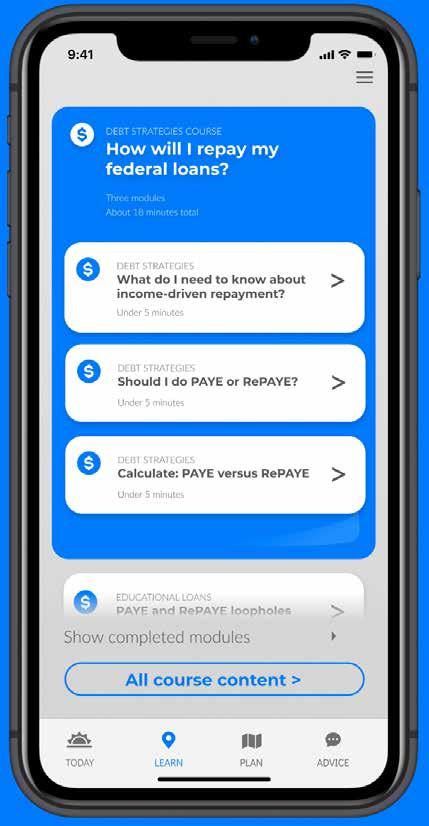


From Semler Scientific
QuantaFlo® PAD is an easy to use, accurate, point of care, non-invasive solution that aids in the early detection of peripheral arterial disease (PAD). This FDA cleared device can be administered by a medical aide in less than 5 minutes. As published in the Journal of Vascular Surgery and the American Journal of Preventive Medicine, QuantaFlo detected undiagnosed PAD in 31.6% of patients +65.1 QuantaFlo is portable and integrates with other technologies and platforms. It is ideal for both home and clinic environments.
1. Smolderen KG, Ameli O, Chaisson CE, Heath K, Mena-Hurtado C. Peripheral Artery Disease Screening in the Community and 1-Year Mortality, Cardiovascular Events, and Adverse Limb Events, AJPM Focus (2022), https://doi.org/10.1016/j.focus.2022.100016
View Brochures, Videos & More at POR.io
Enter Number 4218 in the Search Area
from Newman Medical
Your Patients Trust YOU To Find Their Peripheral Artery Disease
• High-risk patients include those over 65, diabetics, and smokers.
• If left untreated, 25% of patients with PAD will experience a heart attack or stroke within 5 years.
• PAD symptoms are often mistaken for arthritis or old age.
The simpleABI Cuff-Link System is Easy to Learn and Use.
• With a push-button remote, automatic calculations, and waveforms, it’s incredibly user-friendly.
• Reports are straightforward to save and share since the system is PC-based.
Outstanding Value and Reimbursements
• The system pays for itself in less than a year with just one test per week.
• Medicare reimbursements vary by exam and location, averaging from $91 to $174.
View Brochures, Videos & More at POR.io Enter Number 4219 in the Search Area


From bioMérieux
The BIOFIRE® FILMARRAY® TORCH is a fully integrated, random, and continuous-access system designed to meet your laboratory’s syndromic infectious disease testing needs. The benchtop footprint of the BIOFIRE TORCH saves precious lab space, and its scalability meets high throughput demands. BIOFIRE® FILMARRAY® Link Software automatically uploads patient results. Fully compatible with all BIOFIRE® FILMARRAY® Panels intended for use in CLIA-moderate settings, the BIOFIRE TORCH helps you maximize efficiency and productivity.
View Brochures, Videos & More at POR.io
Enter Number 4220 in the Search Area



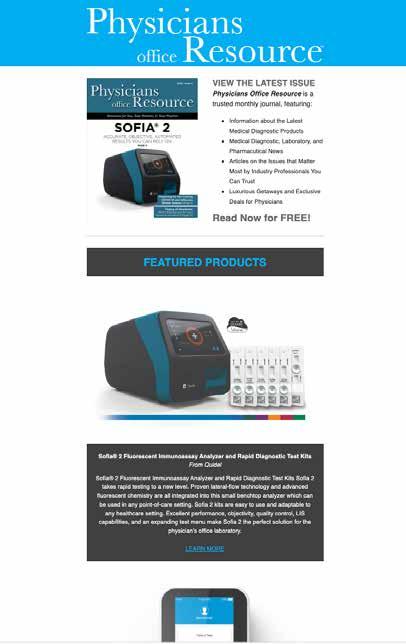
In maintenance treatment of adults with HRD-positive*† advanced ovarian cancer following complete or partial response to first-line platinum-based chemotherapy + bevacizumab1
of survival

Not an actual patient.
‡ Results may vary.
37.2 months (3.1 years)
+ placebo (n=132)
17.7 months (~1.5 years)
HR=0.33 (95% CI: 0.25–0.45)
Median PFS follow-up time: The median duration of follow-up for the primary analysis was 22.7 months (18.0–27.7) in the LYNPARZA arm and 24.0 months (18.7–27.7) in the placebo arm; the median duration of follow-up in the combined groups was 22.9 months.2
PAOLA-1: A phase 3 trial that studied the efficacy and safety of LYNPARZA + bevacizumab vs an active comparator (bevacizumab + placebo)
• Advanced ovarian cancer following response to first-line platinum-based chemotherapy with bevacizumab. Bevacizumab was prescribed for at least 3 cycles in combination with platinum-based chemotherapy
• Patients were stratified by tumor BRCA mutation status and first-line treatment outcome. HRD status was not a stratification factor
• The ITT population was randomized 2:1 (N=806) to receive LYNPARZA tablets 300 mg orally BID in combination with bevacizumab 15 mg/kg infusion every 3 weeks (n=537) or placebo orally BID in combination with bevacizumab 15 mg/kg infusion every 3 weeks (n=269)
• Treatment with LYNPARZA was continued for up to 2 years or until disease progression or unacceptable toxicity. Patients with a partial response could continue treatment beyond 2 years at the physician’s discretion. Bevacizumab was administered every 3 weeks for a total duration of up to 15 months, including the period given with chemotherapy and given as maintenance§
• The primary endpoint was the investigator-assessed PFS, and a key secondary endpoint was overall survival
– FDA approval for LYNPARZA + bevacizumab was based on a prespecified exploratory subgroup of patients with HRD-positive tumors (n=387)
*Select patients for this indication based on an FDA-approved companion diagnostic for LYNPARZA.1
†Including BRCA mutation (as determined by Myriad MyChoice® CDx) and other causes of HRD. HRD positive was defined as either a tBRCA mutation and/or an HRD score ≥42 by Myriad MyChoice® CDx.4
§Patients continued bevacizumab in the maintenance setting and started treatment with LYNPARZA after ≥3 weeks and ≤9 weeks following completion of their last dose of chemotherapy.
LYNPARZA is a poly (ADP-ribose) polymerase (PARP) inhibitor indicated:
First-Line Maintenance HRD-Positive Advanced Ovarian Cancer in Combination with Bevacizumab
In combination with bevacizumab for the maintenance treatment of adult patients with advanced epithelial ovarian, fallopian tube or primary peritoneal cancer who are in complete or partial response to first-line platinum-based chemotherapy and whose cancer is associated with homologous recombination deficiency (HRD)-positive status defined by either a deleterious or suspected deleterious BRCA mutation, and/or genomic instability. Select patients for therapy based on an FDA-approved companion diagnostic for LYNPARZA.
IMPORTANT SAFETY INFORMATION
CONTRAINDICATIONS
There are no contraindications for LYNPARZA.
WARNINGS AND PRECAUTIONS
Myelodysplastic Syndrome/Acute Myeloid Leukemia (MDS/AML):
Occurred in approximately 1.2% of patients with various BRCAm, gBRCAm, HRR gene-mutated or HRD-positive cancers who received LYNPARZA as a single agent or as part of a combination regimen, consistent with the approved indications, and the majority of events had a fatal outcome. The median duration of therapy in patients who developed MDS/AML was approximately 2 years (range: <6 months to >4 years). All of these patients had previous chemotherapy with platinum agents and/or other DNA-damaging agents, including radiotherapy.
In SOLO-1, patients with newly diagnosed advanced BRCAm ovarian cancer, the incidence of MDS/AML was 1.9% (5/260) in patients who received LYNPARZA and 0.8% (1/130) in patients who received placebo based on an updated analysis. In PAOLA-1, of patients with newly diagnosed advanced ovarian cancer with HRD-positive status, the incidence of MDS/AML was 1.6% (4/255) in patients who received LYNPARZA and 2.3% (3/131) in the control arm.
In SOLO-2, patients with BRCAm platinum-sensitive relapsed ovarian cancer, the incidence of MDS/AML was 8% (15/195) in patients who received LYNPARZA and 4% (4/99) in patients who received placebo. The duration of LYNPARZA treatment prior to the diagnosis of MDS/AML ranged from 0.6 years to 4.5 years.
Do not start LYNPARZA until patients have recovered from hematological toxicity caused by previous chemotherapy (≤Grade 1). Monitor complete blood count for cytopenia at baseline and monthly thereafter for clinically
significant changes during treatment. For prolonged hematological toxicities, interrupt LYNPARZA and monitor blood count weekly until recovery. If the levels have not recovered to Grade 1 or less after 4 weeks, refer the patient to a hematologist for further investigations, including bone marrow analysis and blood sample for cytogenetics. Discontinue LYNPARZA if MDS/ AML is confirmed.
Pneumonitis: Occurred in 0.8% of patients exposed to LYNPARZA monotherapy, and some cases were fatal. If patients present with new or worsening respiratory symptoms such as dyspnea, cough, and fever, or a radiological abnormality occurs, interrupt LYNPARZA treatment and initiate prompt investigation. Discontinue LYNPARZA if pneumonitis is confirmed and treat patient appropriately.
Venous Thromboembolism (VTE): Including severe or fatal pulmonary embolism (PE) occurred in patients treated with LYNPARZA. Monitor patients for signs and symptoms of venous thrombosis and pulmonary embolism, and treat as medically appropriate, which may include long-term anticoagulation as clinically indicated.
Embryo-Fetal Toxicity: Based on its mechanism of action and findings in animals, LYNPARZA can cause fetal harm. Verify pregnancy status in females of reproductive potential prior to initiating treatment.
Females
Advise females of reproductive potential of the potential risk to a fetus and to use effective contraception during treatment and for 6 months following the last dose.
ADVERSE REACTIONS—First-Line Maintenance Advanced Ovarian Cancer in Combination with Bevacizumab
Most common adverse reactions (Grades 1-4) in ≥10% of patients treated with LYNPARZA/bevacizumab and at a ≥5% frequency compared to placebo/bevacizumab in the first-line maintenance setting for PAOLA-1 were: nausea (53%), fatigue (including asthenia) (53%), anemia (41%), lymphopenia (24%), vomiting (22%), and leukopenia (18%). In addition, the most common adverse reactions (≥10%) for patients receiving LYNPARZA/ bevacizumab irrespective of the frequency compared with the placebo/ bevacizumab arm were: diarrhea (18%), neutropenia (18%), urinary tract infection (15%), and headache (14%).
In addition, venous thromboembolism occurred more commonly in patients receiving LYNPARZA/bevacizumab (5%) than in those receiving placebo/bevacizumab (1.9%).
38% REDUCTION
RISK OF
HR=0.62 (95% CI: 0.45–0.85)
Number of patients at risk
+
LIMITATION
Data based upon a prespecified exploratory subgroup analysis of a secondary endpoint, which was not controlled for Type 1 error. HRD status was not a stratification factor in PAOLA-1. This analysis is based on Kaplan–Meier estimates and is descriptive only.
Median OS follow-up time: ~5 years (61.7 months for LYNPARZA + bevacizumab and 61.9 months for bevacizumab + placebo); DCO: March 22, 2022. 5
HRD-positive subgroup (n=387)
Events, n (%): 93/255 (37) with LYNPARZA + bevacizumab and 69/132 (52) with bevacizumab + placebo.
ITT population (n=806)
Statistical significance in OS was not reached for LYNPARZA + bevacizumab compared with bevacizumab + placebo.
ADVERSE REACTIONS—First-Line Maintenance Advanced Ovarian Cancer in Combination with Bevacizumab (Cont’d) Most common laboratory abnormalities (Grades 1-4) in ≥25% of patients for LYNPARZA in combination with bevacizumab in the first-line maintenance setting for PAOLA-1 were: decrease in hemoglobin (79%), decrease in lymphocytes (63%), increase in serum creatinine (61%), decrease in leukocytes (59%), decrease in absolute neutrophil count (35%), and decrease in platelets (35%).
DRUG INTERACTIONS
Anticancer Agents: Clinical studies of LYNPARZA with other myelosuppressive anticancer agents, including DNA-damaging agents, indicate a potentiation and prolongation of myelosuppressive toxicity.
CYP3A Inhibitors: Avoid coadministration of strong or moderate CYP3A inhibitors when using LYNPARZA. If a strong or moderate CYP3A inhibitor must be coadministered, reduce the dose of LYNPARZA. Advise patients to avoid grapefruit, grapefruit juice, Seville oranges, and Seville orange juice during LYNPARZA treatment.
CYP3A Inducers: Avoid coadministration of strong or moderate CYP3A inducers when using LYNPARZA.
USE IN SPECIFIC POPULATIONS
Lactation: No data are available regarding the presence of olaparib in human milk, its effects on the breastfed infant or on milk production. Because of the potential for serious adverse reactions in the breastfed infant, advise a lactating woman not to breastfeed during treatment with LYNPARZA and for 1 month after receiving the final dose.
Pediatric Use: The safety and efficacy of LYNPARZA have not been established in pediatric patients.
HRD-negative or HRD-unknown subgroup (n=277)
Results from an exploratory analysis in this subgroup (HR=1.18 [95% CI: 0.87–1.60]) indicated that the clinical benefit was primarily attributed to the results seen in the HRD-positive subgroup.
Hepatic Impairment: No adjustment to the starting dose is required in patients with mild or moderate hepatic impairment (Child-Pugh classification A and B). There are no data in patients with severe hepatic impairment (Child-Pugh classification C).
Renal Impairment: No dosage modification is recommended in patients with mild renal impairment (CLcr 51-80 mL/min estimated by CockcroftGault). In patients with moderate renal impairment (CLcr 31-50 mL/min), reduce the dose of LYNPARZA to 200 mg twice daily. There are no data in patients with severe renal impairment or end-stage renal disease (CLcr ≤30 mL/min).
Please see Brief Summary of Prescribing Information on the following pages.
You are encouraged to report the negative side effects of prescription drugs to the FDA. Visit www.FDA.gov/medwatch or call 1-800-FDA-1088.
BID=twice daily; BRCAm=BRCA-mutated; CDx=companion diagnostic; CI=confidence interval; DCO=data cutoff; gBRCAm=germline BRCA-mutated; HR=hazard ratio; HRD=homologous recombination deficiency; HRR=homologous recombination repair; ITT=intention-to-treat; OS=overall survival; PFS=progression-free survival; tBRCA=tumor BRCA
References: 1. LYNPARZA® (olaparib) [prescribing information]. Wilmington, DE: AstraZeneca Pharmaceuticals LP; 2023. 2. Ray-Coquard I, Pautier P, Pignata S, et al. Olaparib plus bevacizumab as first-line maintenance in ovarian cancer. N Engl J Med 2019;381(25):2416-2428. 3. Ray-Coquard I, Pautier P, Pignata S, et al. Olaparib plus bevacizumab as first-line maintenance in ovarian cancer. Supplementary Appendix. N Engl J Med. 2019;381(25):2416-2428. 4. Ray-Coquard I, Pautier P, Pignata S, et al. Olaparib plus bevacizumab as first-line maintenance in ovarian cancer. PAOLA-1 Protocol. N Engl J Med. 2019;381(25):2416-2428. 5. Ray-Coquard I, Leary A, Pignata S, et al. Olaparib plus bevacizumab first-line maintenance in ovarian cancer: final overall survival results from the PAOLA-1/ENGOT-ov25 trial. Ann Oncol. 2023;34(8):681-692.
LYNPARZA® (olaparib) tablets, for oral use
Initial U.S. Approval: 2014
Brief Summary of Prescribing Information. For complete prescribing information consult official package insert.
INDICATIONS AND USAGE
First-Line Maintenance Treatment of BRCA-mutated Advanced Ovarian Cancer
Lynparza is indicated for the maintenance treatment of adult patients with deleterious or suspected deleterious germline or somatic BRCA-mutated advanced epithelial ovarian, fallopian tube or primary peritoneal cancer who are in complete or partial response to first-line platinum-based chemotherapy. Select patients for therapy based on an FDA-approved companion diagnostic for Lynparza [see Dosage and Administration (2.1) in the full Prescribing Information]
First-line Maintenance Treatment of HRD-positive Advanced Ovarian Cancer in Combination with Bevacizumab
Lynparza is indicated in combination with bevacizumab for the maintenance treatment of adult patients with advanced epithelial ovarian, fallopian tube or primary peritoneal cancer who are in complete or partial response to first-line platinum-based chemotherapy and whose cancer is associated with homologous recombination deficiency (HRD)-positive status defined by either:
• a deleterious or suspected deleterious BRCA mutation, and/or
• genomic instability.
Select patients for therapy based on an FDA-approved companion diagnostic for Lynparza [see Dosage and Administration (2.1) in the full Prescribing Information]
Maintenance Treatment of BRCA-mutated Recurrent Ovarian Cancer
Lynparza is indicated for the maintenance treatment of adult patients with deleterious or suspected deleterious germline or somatic BRCA-mutated recurrent epithelial ovarian, fallopian tube or primary peritoneal cancer, who are in complete or partial response to platinum-based chemotherapy. Select patients for therapy based on an FDA-approved companion diagnostic for Lynparza [see Dosage and Administration (2.1) in the full Prescribing Information]
DOSAGE AND ADMINISTRATION
Patient Selection
Information on FDA-approved tests for the detection of genetic mutations is available at http://www.fda.gov/companiondiagnostics.
Select patients for treatment with Lynparza based on the presence of deleterious or suspected deleterious HRR gene mutations, including BRCA mutations, or genomic instability based on the indication, biomarker, and sample type (Table 1).
Table 1 Biomarker Testing for Patient Selection*
Indication Biomarker Sample type
Tumor
First-line maintenance treatment of germline or somatic BRCAm advanced ovarian cancer
First-line maintenance treatment of HRD-positive advanced ovarian cancer in combination with bevacizumab
Maintenance treatment of germline or somatic BRCAm recurrent ovarian cancer
BRCA1m, BRCA2m X X
BRCA1m, BRCA2m and/or genomic instability X
BRCA1m, BRCA2m X X
* Where testing fails or tissue sample is unavailable/insufficient, or when germline testing is negative, consider using an alternative test, if available.
Recommended Dosage
The recommended dosage of Lynparza is 300 mg taken orally twice daily, with or without food. If a patient misses a dose of Lynparza, instruct patient to take their next dose at its scheduled time. Instruct patients to swallow tablets whole. Do not chew, crush, dissolve, or divide tablet.
First-Line Maintenance Treatment of BRCA-mutated Advanced Ovarian Cancer
Continue treatment until disease progression, unacceptable toxicity, or completion of 2 years of treatment. Patients with a complete response (no radiological evidence of disease) at 2 years should stop treatment. Patients with evidence of disease at 2 years, who in the opinion of the treating healthcare provider can derive further benefit from continuous treatment, can be treated beyond 2 years.
First-Line Maintenance Treatment of HRD-positive Advanced Ovarian Cancer in Combination with Bevacizumab
Continue Lynparza treatment until disease progression, unacceptable toxicity, or completion of 2 years of treatment. Patients with a complete response (no radiological evidence of disease) at 2 years should stop treatment. Patients with evidence of disease at 2 years, who in the opinion of the treating healthcare provider can derive further benefit from continuous Lynparza treatment, can be treated beyond 2 years.
When used with Lynparza, the recommended dose of bevacizumab is 15 mg/kg every three weeks. Bevacizumab should be given for a total of 15 months including the period given with chemotherapy and given as maintenance. Refer to the Prescribing Information for bevacizumab when used in combination with Lynparza for more information.
Germline or Somatic BRCA-mutated Recurrent Ovarian Cancer
Continue treatment until disease progression or unacceptable toxicity for:
• Maintenance treatment of germline or somatic BRCA-mutated recurrent ovarian cancer.
Dosage Modifications for Adverse Reactions
To manage adverse reactions, consider interruption of treatment or dose reduction. The recommended dose reduction is 250 mg taken twice daily.
If a further dose reduction is required, then reduce to 200 mg taken twice daily.
Dosage Modifications for Concomitant Use with Strong or Moderate CYP3A Inhibitors
Avoid concomitant use of strong or moderate CYP3A inhibitors with Lynparza.
If concomitant use cannot be avoided, reduce Lynparza dosage to:
• 100 mg twice daily when used concomitantly with a strong CYP3A inhibitor.
• 150 mg twice daily when used concomitantly with a moderate CYP3A inhibitor.
After the inhibitor has been discontinued for 3 to 5 elimination half-lives, resume the Lynparza dose taken prior to initiating the CYP3A inhibitor [see Drug Interactions (7.2) and Clinical Pharmacology (12.3) in the full Prescribing Information]
Dosage Modifications for Renal Impairment
Moderate Renal Impairment
In patients with moderate renal impairment (CLcr 31-50 mL/min), reduce the Lynparza dosage to 200 mg orally twice daily [see Use in Specific Populations (8.6) and Clinical Pharmacology (12.3) in the full Prescribing Information]
CONTRAINDICATIONS
None.
WARNINGS AND PRECAUTIONS
Myelodysplastic Syndrome/Acute Myeloid Leukemia
Myelodysplastic syndrome (MDS)/Acute Myeloid Leukemia (AML) has occurred in patients treated with Lynparza and some cases were fatal.
In clinical studies, among 2219 patients with various BRCAm, gBRCAm, HRR gene-mutated or HRD-positive cancers who received Lynparza as a single agent or as part of combination regimen, consistent with approved indications, the cumulative incidence of MDS/AML was approximately 1.2% (26/2219) [see Adverse Reactions (6.1) in the full Prescribing Information]. Of these, 54% (14/26) had a fatal outcome. The median duration of therapy with Lynparza in patients who developed MDS/AML was approximately 2 years (range: < 6 months to > 4 years). All of these patients had received previous chemotherapy with platinum agents and/or other DNA damaging agents including radiotherapy.
In SOLO1, patients with newly diagnosed advanced BRCAm ovarian cancer, the incidence of MDS/AML was 1.9% (5/260) in patients who received Lynparza and 0.8% (1/130) in patients who received placebo based on an updated analysis. In PAOLA-1, of patients with newly diagnosed advanced ovarian cancer with HRD-positive status, the incidence of MDS/AML was 1.6% (4/255) in patients who received Lynparza and 2.3% (3/131) in the control arm.
In SOLO2, patients with BRCAm platinum-sensitive relapsed ovarian cancer, the incidence of MDS/AML was 8% (15/195) in patients who received Lynparza and 4% (4/99) in patients who received placebo. The duration of Lynparza treatment prior to the diagnosis of MDS/AML ranged from 0.6 years to 4.5 years.
Do not start Lynparza until patients have recovered from hematological toxicity caused by previous chemotherapy (≤ Grade 1). Monitor complete blood count for cytopenia at baseline and monthly thereafter for clinically significant changes during treatment. For prolonged hematological toxicities, interrupt Lynparza and monitor blood counts weekly until recovery. If the levels have not recovered to Grade 1 or less after 4 weeks, refer the patient to a hematologist for further investigations, including bone marrow analysis and blood sample for cytogenetics. If MDS/AML is confirmed, discontinue Lynparza.
Pneumonitis
In clinical studies enrolling 2901 patients with various cancers who received Lynparza as a single agent [see Adverse Reactions (6.1) in the full Prescribing Information], the incidence of pneumonitis, including fatal cases, was 0.8% (24/2901). If patients present with new or worsening respiratory symptoms such as dyspnea, cough and fever, or a radiological abnormality occurs, interrupt Lynparza treatment and promptly assess the source of the symptoms. If pneumonitis is confirmed, discontinue Lynparza treatment and treat the patient appropriately.
Venous Thromboembolism
Venous thromboembolism (VTE), including severe or fatal pulmonary embolism (PE), occurred in patients treated with Lynparza [see Adverse Reactions (6.1) in the full Prescribing Information]
In the combined data of two randomized, placebo-controlled clinical studies (PROfound and PROpel) in patients with metastatic castration-resistant prostate cancer (N=1180), VTE occurred in 8% of patients who received Lynparza, including pulmonary embolism in 6%. In the control arms, VTE occurred in 2.5% including pulmonary embolism in 1.5%.
Monitor patients for clinical signs and symptoms of venous thrombosis and pulmonary embolism and treat as medically appropriate, which may include long-term anticoagulation as clinically indicated.
Embryo-Fetal Toxicity
Lynparza can cause fetal harm when administered to a pregnant woman based on its mechanism of action and findings in animals. In an animal reproduction study, administration of olaparib to pregnant rats during the period of organogenesis caused teratogenicity and embryo-fetal
toxicity at exposures below those in patients receiving the recommended human dose of 300 mg twice daily. Apprise pregnant women of the potential hazard to a fetus and the potential risk for loss of the pregnancy. Advise females of reproductive potential to use effective contraception during treatment and for 6 months following the last dose of Lynparza. Based on findings from genetic toxicity and animal reproduction studies, advise male patients with female partners of reproductive potential or who are pregnant to use effective contraception during treatment and for 3 months following the last dose of Lynparza [see Use in Specific Populations (8.1, 8.3) in the full Prescribing Information]
ADVERSE REACTIONS
The following adverse reactions are discussed elsewhere in the labeling:
• Myelodysplastic Syndrome/Acute Myeloid Leukemia [see Warnings and Precautions (5.1) in the full Prescribing Information]
• Pneumonitis [see Warnings and Precautions (5.2) in the full Prescribing Information]
• Venous Thromboembolism [see Warnings and Precautions (5.3) in the full Prescribing Information]
Clinical Trial Experience
Because clinical trials are conducted under widely varying conditions, adverse reaction rates observed in the clinical trials of a drug cannot be directly compared to rates in the clinical trials of another drug and may not reflect the rates observed in practice. Unless otherwise specified, the data described in the WARNINGS AND PRECAUTIONS reflect exposure to Lynparza as a single agent in 2901 patients; 2135 patients with exposure to 300 mg twice daily tablet dose including five controlled, randomized, trials (SOLO-1, SOLO-2, OlympiAD, POLO, and PROfound) and to 400 mg twice daily capsule dose in 766 patients in other trials that were pooled to conduct safety analyses. In addition to the 2901 patients, certain subsections in the WARNINGS AND PRECAUTIONS include adverse reactions observed with exposure to Lynparza with abiraterone (n=398) in PROpel. All patients with metastatic castration resistant prostate cancer received concomitant ADT or previous bilateral orchiectomy.
In the pooled safety population, 56% of patients were exposed for 6 months or longer and 28% were exposed for greater than one year in the Lynparza group.
In this pooled safety population, the most common adverse reactions in ≥10% of patients were nausea (60%), fatigue (55%), anemia (36%), vomiting (32%), diarrhea (24%), decreased appetite (22%), headache (16%), dysgeusia (15%), cough (15%), neutropenia (14%), dyspnea (14%), dizziness (12%), dyspepsia (12%), leukopenia (11%), and thrombocytopenia (10%).
First-Line Maintenance Treatment of BRCA-mutated Advanced Ovarian Cancer SOLO-1
The safety of Lynparza for the maintenance treatment of patients with BRCA-mutated advanced ovarian cancer following first-line treatment with platinum-based chemotherapy was investigated in SOLO-1 [see Clinical Studies (14.1) in the full Prescribing Information]. Patients received Lynparza tablets 300 mg orally twice daily (n=260) or placebo (n=130) until disease progression or unacceptable toxicity. The median duration of study treatment was 25 months for patients who received Lynparza and 14 months for patients who received placebo. Among patients who received Lynparza, dose interruptions due to an adverse reaction of any grade occurred in 52% and dose reductions due to an adverse reaction occurred in 28%. The most frequent adverse reactions leading to dose interruption or reduction of Lynparza were anemia (23%), nausea (14%), and vomiting (10%). Discontinuation due to adverse reactions occurred in 12% of patients receiving Lynparza. The most frequent adverse reactions that led to discontinuation of Lynparza were fatigue (3.1%), anemia (2.3%), and nausea (2.3%).
Tables 2 and 3 summarize adverse reactions and laboratory abnormalities in SOLO-1.
Table 2 Adverse Reactions* in SOLO-1 (≥10% of Patients Who Received Lynparza)
Adverse Reaction
Table 2 Adverse Reactions* in SOLO-1 (≥10% of Patients Who Received Lynparza) (cont’d)
Infestations
* Graded according to the National Cancer Institute Common Terminology Criteria for Adverse Events (NCI CTCAE), version 4.0.
† Includes abdominal pain, abdominal pain lower, abdominal pain upper, abdominal distension, abdominal discomfort, and abdominal tenderness.
‡ Includes colitis, diarrhea, and gastroenteritis.
§ Includes stomatitis, aphthous ulcer, and mouth ulceration.
¶ Includes asthenia, fatigue, lethargy, and malaise.
# Includes neutropenia and febrile neutropenia.
Þ Includes leukopenia and white blood cell count decreased.
ß Includes platelet count decreased and thrombocytopenia.
à Includes urosepsis, urinary tract infection, urinary tract pain, and pyuria.
è Includes dyspnea and dyspnea exertional.
Clinically relevant adverse reactions that occurred in <10% of patients receiving Lynparza were increased blood creatinine (8%), lymphopenia (6%), VTE (3%), hypersensitivity (2%), MDS/AML (1.9%), dermatitis (1%), and increased mean cell volume (0.4%).
Table 3 Laboratory Abnormalities Reported in ≥25% of Patients in SOLO-1 Laboratory Parameter* Lynparza tablets n†=260 Placebo n†=130
* Patients were allowed to enter clinical studies with laboratory values of CTCAE Grade 1.
† This number represents the safety population. The derived values in the table are based on the total number of evaluable patients for each laboratory parameter.
First-line Maintenance Treatment of HRD-positive Advanced Ovarian Cancer in Combination with Bevacizumab PAOLA-1
The safety of Lynparza in combination with bevacizumab for the maintenance treatment of patients with advanced ovarian cancer following first-line treatment containing platinum-based chemotherapy and bevacizumab was investigated in PAOLA-1 [see Clinical Studies (14.2) in the full Prescribing Information]. This study was a placebo-controlled, double-blind study in which 802 patients received either Lynparza 300 mg BID in combination with bevacizumab (n=535) or placebo in combination with bevacizumab (n=267) until disease progression or unacceptable toxicity. The median duration of treatment with Lynparza was 17.3 months and 11 months for bevacizumab post-randomization on the Lynparza/bevacizumab arm.
Fatal adverse reactions occurred in 1 patient due to concurrent pneumonia and aplastic anemia. Serious adverse reactions occurred in 31% of patients who received Lynparza/bevacizumab. Serious adverse reactions in >5% of patients included hypertension (19%) and anemia (17%).
Dose interruptions due to an adverse reaction of any grade occurred in 54% of patients receiving Lynparza/bevacizumab and dose reductions due to an adverse reaction occurred in 41% of patients who received Lynparza/bevacizumab.
The most frequent adverse reactions leading to dose interruption in the Lynparza/bevacizumab arm were anemia (21%), nausea (7%), vomiting (3%), and fatigue (3%), and the most frequent adverse reactions leading to reduction in the Lynparza/bevacizumab arm were anemia (19%), nausea (7%), and fatigue (4%).
Discontinuation due to adverse reactions occurred in 20% of patients receiving Lynparza/ bevacizumab. Specific adverse reactions that most frequently led to discontinuation in patients treated with Lynparza/bevacizumab were anemia (4%) and nausea (3%).
The most common adverse reactions (≥ 10%) for patients receiving Lynparza/bevacizumab irrespective of the frequency compared with the placebo/bevacizumab arm were nausea (53%), fatigue (including asthenia) (53%), anemia (41%), lymphopenia (24%), vomiting (22%), diarrhea (18%), neutropenia (18%), leukopenia (18%), urinary tract infection (15%), and headache (14%).
Tables 4 and 5 summarize adverse reactions and laboratory abnormalities in PAOLA-1, respectively.
Table 4 Adverse Reactions* Occurring in ≥10% of Patients Treated with Lynparza/bevacizumab in PAOLA-1 and at ≥5% Frequency Compared to the Placebo/bevacizumab Arm
Adverse Reactions Lynparza/bevacizumab n=535 Placebo/bevacizumab n=267
Table 6 Adverse Reactions* in SOLO-2 (≥20% of Patients Who Received Lynparza) Adverse Reaction Lynparza tablets
and Lymphatic Disorders
* Graded according to the National Cancer Institute Common Terminology Criteria for Adverse Events (NCI CTCAE), version 4.0.
† Includes asthenia and fatigue.
‡ Includes anemia, anemia macrocytic, erythropenia, haematocrit decreased, haemoglobin decreased, normochromic anemia, normochromic normocytic anemia, normocytic anemia, and red blood cell count decreased.
§ Includes B-lymphocyte count decreased, lymphocyte count decreased, lymphopenia, and T-lymphocyte count decreased.
¶ Includes leukopenia and white blood cell count decreased.
Clinically relevant adverse reactions that occurred in <10% of patients receiving Lynparza/ bevacizumab were dysgeusia (8%), dyspnea (8%), stomatitis (5%), dyspepsia (4.3%), erythema (3%), dizziness (2.6%), hypersensitivity (1.7%), and MDS/AML (0.7%).
Venous thromboembolism occurred more commonly in patients receiving Lynparza/bevacizumab (5%) than in those receiving placebo/bevacizumab (1.9%).
Table 5 Laboratory Abnormalities Reported in ≥25% of Patients in PAOLA-1*
* Reported within 30 days of the last dose.
† Patients were allowed to enter clinical studies with laboratory values of CTCAE Grade 1.
‡ This number represents the safety population. The derived values in the table are based on the total number of evaluable patients for each laboratory parameter.
Maintenance Treatment of BRCA-mutated Recurrent Ovarian Cancer SOLO-2
The safety of Lynparza for the maintenance treatment of patients with platinum sensitive gBRCAm ovarian cancer was investigated in SOLO-2 [see Clinical Studies (14.3) in the full Prescribing Information]. Patients received Lynparza tablets 300 mg orally twice daily (n=195) or placebo (n=99) until disease progression or unacceptable toxicity. The median duration of study treatment was 19.4 months for patients who received Lynparza and 5.6 months for patients who received placebo.
Among patients who received Lynparza, dose interruptions due to an adverse reaction of any grade occurred in 45% and dose reductions due to an adverse reaction occurred in 27%. The most frequent adverse reactions leading to dose interruption or reduction of Lynparza were anemia (22%), neutropenia (9%), and fatigue/asthenia (8%). Discontinuation due to an adverse reaction occurred in 11% of patients receiving Lynparza.
Tables 6 and 7 summarize adverse reactions and laboratory abnormalities in SOLO-2.
General Disorders and Administration Site Conditions
and Infestations Nasopharyngitis/URI/ sinusitis/rhinitis/influenza
Musculoskeletal and Connective Tissue Disorders
Nervous System Disorders
* Graded according to the National Cancer Institute Common Terminology Criteria for Adverse Events (NCI CTCAE), version 4.0.
† Represents grouped term consisting of abscess oral, aphthous ulcer, gingival abscess, gingival disorder, gingival pain, gingivitis, mouth ulceration, mucosal infection, mucosal inflammation, oral candidiasis, oral discomfort, oral herpes, oral infection, oral mucosal erythema, oral pain, oropharyngeal discomfort, and oropharyngeal pain.
‡ Represents grouped term consisting of anemia, hematocrit decreased, hemoglobin decreased, iron deficiency, mean cell volume increased, and red blood cell count decreased.
Clinically relevant adverse reactions that occurred in <20% of patients receiving Lynparza were neutropenia (19%), cough (18%), leukopenia (16%), hypomagnesemia (14%), thrombocytopenia (14%), dizziness (13%), dyspepsia (11%), increased creatinine (11%), MDS/AML (8%), edema (8%), rash (6%), VTE (5%), and lymphopenia (1%).
Table 7 Laboratory Abnormalities Reported in ≥25% of Patients in SOLO-2 Laboratory Parameter* Lynparza tablets
Increase in mean corpuscular volume‡ 89 - 52 -
* Patients were allowed to enter clinical studies with laboratory values of CTCAE Grade 1.
† This number represents the safety population. The derived values in the table are based on the total number of evaluable patients for each laboratory parameter.
‡ Represents the proportion of subjects whose mean corpuscular volume was > upper limit of normal (ULN).
Postmarketing Experience
The following adverse reactions have been identified during post-approval use of Lynparza. Because these reactions are reported voluntarily from a population of uncertain size, it is not always possible to reliably estimate their frequency or establish a causal relationship to drug exposure.
Immune System Disorders: Hypersensitivity including angioedema.
Skin and subcutaneous tissue disorders: Erythema nodosum, rash, dermatitis.
DRUG INTERACTIONS
Use with Anticancer Agents
Clinical studies of Lynparza with other myelosuppressive anticancer agents, including DNA damaging agents, indicate a potentiation and prolongation of myelosuppressive toxicity.
Effect of Other Drugs on Lynparza
Strong and Moderate CYP3A Inhibitors
Coadministration of CYP3A inhibitors can increase olaparib concentrations, which may increase the risk for adverse reactions [see Clinical Pharmacology (12.3) in the full Prescribing Information]
Avoid coadministration of strong or moderate CYP3A inhibitors. If the strong or moderate inhibitor must be coadministered, reduce the dose of Lynparza [see Dosage and Administration (2.4) in the full Prescribing Information]
Strong and Moderate CYP3A Inducers
Concomitant use with a strong or moderate CYP3A inducer decreased olaparib exposure, which may reduce Lynparza efficacy [see Clinical Pharmacology (12.3) in the full Prescribing Information]. Avoid coadministration of strong or moderate CYP3A inducers.
USE IN SPECIFIC POPULATIONS
Pregnancy
Risk Summary
Based on findings in animals and its mechanism of action [see Clinical Pharmacology (12.1) in the full Prescribing Information], Lynparza can cause fetal harm when administered to a pregnant woman. There are no available data on Lynparza use in pregnant women to inform the drugassociated risk. In an animal reproduction study, the administration of olaparib to pregnant rats during the period of organogenesis caused teratogenicity and embryo-fetal toxicity at exposures below those in patients receiving the recommended human dose of 300 mg twice daily (see Data) Apprise pregnant women of the potential hazard to the fetus and the potential risk for loss of the pregnancy.
The estimated background risk of major birth defects and miscarriage for the indicated population is unknown. The estimated background risk in the U.S. general population of major birth defects is 2-4%; and the risk for spontaneous abortion is approximately 15-20% in clinically recognized pregnancies.
Data
Animal Data
In a fertility and early embryonic development study in female rats, olaparib was administered orally for 14 days before mating through to Day 6 of pregnancy, which resulted in increased post-implantation loss at a dose level of 15 mg/kg/day (with maternal systemic exposures approximately 7% of the human exposure (AUC0-24h) at the recommended dose).
In an embryo-fetal development study, pregnant rats received oral doses of 0.05 and 0.5 mg/kg/day olaparib during the period of organogenesis. A dose of 0.5 mg/kg/day (with maternal systemic exposures approximately 0.18% of human exposure (AUC0-24h) at the recommended dose) caused embryo-fetal toxicities including increased post-implantation loss and major malformations of the eyes (anophthalmia, microphthalmia), vertebrae/ribs (extra rib or ossification center; fused or absent neural arches, ribs, and sternebrae), skull (fused exoccipital), and diaphragm (hernia). Additional abnormalities or variants included incomplete or absent ossification (vertebrae/sternebrae, ribs, limbs) and other findings in the vertebrae/sternebrae, pelvic girdle, lung, thymus, liver, ureter, and umbilical artery. Some findings noted above in the eyes, ribs, and ureter were observed at a dose of 0.05 mg/kg/day olaparib at lower incidence.
Lactation
Risk Summary
No data are available regarding the presence of olaparib in human milk, or on its effects on the breastfed infant or on milk production. Because of the potential for serious adverse reactions in the breastfed infants from Lynparza, advise a lactating woman not to breastfeed during treatment with Lynparza and for one month after receiving the last dose.
Females and Males of Reproductive Potential
Lynparza can cause fetal harm when administered to a pregnant woman [see Use in Specific Populations (8.1) in the full Prescribing Information]
Pregnancy Testing
Verify pregnancy status in females of reproductive potential prior to initiating treatment with Lynparza.
Contraception
Females
Advise females of reproductive potential to use effective contraception during treatment with Lynparza and for 6 months following the last dose.
Males
Based on findings in genetic toxicity and animal reproduction studies, advise male patients with female partners of reproductive potential or who are pregnant to use effective contraception during treatment and for 3 months following the last dose of Lynparza. Advise male patients not to donate sperm during therapy and for 3 months following the last dose of Lynparza [see Use in Specific Populations (8.1) and Nonclinical Toxicology (13.1) in the full Prescribing Information]
Pediatric Use
Safety and effectiveness of Lynparza have not been established in pediatric patients.
Of the 2901 patients with advanced solid tumors who received Lynparza as a single agent, 680 (23%) patients were aged ≥65 years, and this included 206 (7%) patients who were aged ≥75 years. Thirteen (0.4%) patients were aged ≥85 years.
Of the 535 patients with advanced solid tumors who received Lynparza tablets 300 mg orally twice daily in combination with bevacizumab (PAOLA-1), 204 (38%) patients were aged ≥65 years, and this included 31 (6%) patients who were aged ≥75 years.
Of the 398 patients with advanced solid tumors who received Lynparza tablets 300 mg orally twice daily in combination with abiraterone and prednisone or prednisolone (PROpel), 268 (67%) patients were aged ≥65 years, and this included 95 (24%) patients who were aged ≥75 years. No overall differences in the safety or effectiveness of Lynparza were observed between these patients and younger patients.
Renal Impairment
No dosage modification is recommended in patients with mild renal impairment (CLcr 51 to 80 mL/min estimated by Cockcroft-Gault). Reduce Lynparza dosage to 200 mg twice daily in patients with moderate renal impairment (CLcr 31 to 50 mL/min) [see Dosage and Administration (2.5) in the full Prescribing Information]. There are no data in patients with severe renal impairment or end-stage disease (CLcr ≤30 mL/min) [see Clinical Pharmacology (12.3) in the full Prescribing Information]
Hepatic Impairment
No adjustment to the starting dose is required in patients with mild or moderate hepatic impairment (Child-Pugh classification A and B). There are no data in patients with severe hepatic impairment (Child-Pugh classification C) [see Clinical Pharmacology (12.3) in the full Prescribing Information]
Distributed by:
AstraZeneca Pharmaceuticals LP Wilmington, DE 19850
©AstraZeneca 2023
11/23 US-82903 11/23

JOHN MUIR
BY BRANDI BROWER, TRAVEL EDITOR
My recent trip to California was a journey of contrasts, as I had the chance to explore two breathtaking regions. The first part of my adventure was in sunny, glamorous Newport Beach, a bayside retreat steeped in history and luxury. From surf to slopes, in stark contrast, my second stop was the serene Sierras of South Lake Tahoe, a destination of unparalleled natural beauty where stars and tech titans escape to 6,000 feet above sea level in Heavenly Valley.
Located just over an hour from the Reno airport, the ascent and descent via Highway 50 is a fantastic journey to our end goal. The first glimpse of the iconic freshwater lake, the largest alpine lake in the country, is a sight that will leave you speech-
less. This slice of heaven, a favorite among 15 million visitors annually, is a must-visit for any nature lover.
Long-time resident, founder, and former CEO of tech company Belkin International Inc., outdoor enthusiast, billionaire Chet Pipkin had a vision for bringing a lux boutique hotel to the area. With his brother, Eric, the dream of creating an eco-luxury micro-resort became a reality. Opening just two years ago, The Desolation Hotel is a five-star wilder “nest” that has set the bar for what high-end properties can accomplish to help the setting where they reside, all while maintaining a deep commitment to environmental sustainability.
The Desolation Hotel is named after its proximity to the protected Desolation Wilderness. Desolation is a noun meaning complete emptiness or destruction, anguished misery, or loneliness. This definition attached to the property name is ironic: destruction and misery vs. constructing an environmentally friendly edifice to bring positive change to the area. That positive change was the philanthropist’s incentive from its conception, and sustainability was paramount to the project.
This beautiful region was a favorite of legendary preservationist John Muir. Pipkin and Muir share a passion for the Sierra Nevadas and stewardship of the natural surroundings. The famous mountaineer wrote many reflections on this area. I’ll use several Muir-isms to accentuate this incredible destination.
“Tahoe is surely not one but many. As I curve around its heads and bays and look far out on its level sky, fairly tinted and fading in pensive air, I am reminded of all the mountain lakes I ever knew, as if this were a kind of water heaven to which they all had come.” — JOHN
MUIR
The beauty of the natural surroundings, as described by Muir, is truly inspiring and will leave you in awe. The 191 square mile freshwater lake is the striking focal point of the Tahoe basin, 12 miles broad and 22 miles long with a 72-mile circumference; it’s the second deepest lake in the U.S. with a depth of 1,645 feet at its lowest point, water so transparent you can see objects lower than 70 feet, this clarity contributes to it being one of the purest bodies of water in the world. The lake straddles the state lines of Nevada and California, with 2/3rds of the shoreline in the Golden State. A few minutes walking from the Desolation Hotel, you can access one of the many beaches that encompass “Big Blue,” as it is fondly referred to.
“Keep close to Nature’s heart... and break clear away, once in a while, and climb a mountain or spend a week in the woods. Wash your spirit clean.”
— JOHN MUIR
There are a variety of trees in these woods, but mainly Ponderosa, Jeffery, and Sugar pines that grow up to 200 feet tall. *Desolation Hotel partners with the Sugar Pine Foundation, planting a tree in the Tahoe area for every night a guest stays. According to recent estimations, there are 75 million trees in the Tahoe Basin, in contrast to the 2 million standing tall back in the 1800s when Muir sauntered the Sierras. As for climbing a mountain, there are five mountain peaks above 9000 feet and 585 miles of official trails to discover and “wash your spirit clean.”
“Between every two pines is a doorway to a new world.”
— JOHN MUIR
I enter the doorway into my accommodations, one of only 21 suites and townhomes on site, which gives guests the feeling of a private experience. Tucked among the pines, the muted but sleek mountain-modern Desolation Hotel was designed to emulate the natural landscape — To preserve as many trees as possible, the resort was built to wrap around the trees on site. Trees that couldn’t be salvaged were removed and relo-


cated within the resort in new forms, benches throughout the pool and walkway areas, and exterior beams. The aggregation of tall black buildings with light wood beams blends in with its surroundings yet stands out with its aesthetic. Inside, the three-story townhouse is casual and homey, as is the vibe in general. There is no valet service here; instead, there is an individual garage with a car park code and an E.V. charger. The hotel has 20, the highest concentration of electric vehicle charging stations in the area, convenience for car owners, and cleaner air for everyone. The parking lot tiles are designed to capture snow and rain best, ensuring Big Blue’s beautiful azure color and preventing runoff.
The realization of the Pipkin brothers’ eco-conscious goals was made possible through the collaboration with Monarch Architecture and the execution by Sierra Sustainable Builders. The hotel’s commitment to sustainability was evident in every aspect, from the green building practices that reduced the carbon footprint, to the high-efficiency appliances, and the choice

of local, sustainable materials. With an average of 300 days of sunshine, the team maximized natural light with hidden rooftop solar arrays and skylights on the upper floors. This commitment to sustainability is not just part of the construction, but it’s also part of the hotel’s identity, inspiring guests to be more aware and conscious of protecting and preserving the natural beauty surrounding us.
“Everybody needs beauty...places to play in and pray in where nature may heal and cheer and give strength to the body and soul alike.”— JOHN MUIR
The beauty within the Alpine Studios, Granite Suites, and my accommodation in the three-story El Dorado townhome is attributed to the all-female design team of Studioette out of Oakland, California. Combining elements of Scandinavian design and Japanese tranquility, the team created the perfect upscale “live, work, play” vibe that feels more like a residential retreat than a hotel. Deliberate design features: kitchenettes with Bertazzoni gas range, microwave, disposal, dishwasher, full-size refrigerator/freezer, and stackable washer/dryer, not one but two, two-way gas fireplaces, both sharing the embers glow out onto the two private balconies, with one patio dawning an open-air soaking tub to view the stars while relaxing. Sweet suite touches include Frette linens and robes, Grown Alchemist toiletries, a walk-in shower and bathtub, heated bathroom floors, a Dyson hairdryer, spices for cooking enthusiasts, a Chemex pour-over
glass coffee maker, automated skylight shades, two 55” T.V.s with Hulu + Live T.V., and not surprisingly, Belkin Soundform Bluetooth speakers and Belkin Boost Charge wireless chargers, curated artwork throughout, all combine to create a cozy yet contemporary cottage feel.
“To dine with a glacier on a sunny day is a glorious thing and makes common feast of meat and wine ridiculous. The glacier eats hills and sunbeams.” — JOHN MUIR
When dining onsite, Maggie’s is a great place to enjoy a “feast of meat and wine,” respectfully. Named after Maggie McPeak, a vanguard for female explorers, she was the first woman to ascend nearly every Western alpine summit, tearing down the rules for women in the wilderness. The intimate indoor-outdoor eatery on the third floor of the main building has a bit of a tree-house feel as the patio decking wraps around the saved pine tree growing tall alongside the restaurant. With a two-sided fireplace, outdoor heaters, and umbrellas, patrons can dine al fresco in every weather. A wall of wines is used as a focal point the minute you walk in, reaching up to the vaulted ceiling. But the names of the clever cocktails with sketches of employees’ faithful four-legged friends make up the libations menu: a Stoli Vanil drink named Marley’s Mellow Mood, with a drawing of a black lab named Marley. The drink menu signals that canines are allowed at the hotel. Chet Pipkin’s white lab Harriet’s dog bed in the lobby is another sign that dogs are welcome guests at the Desolation. The feast options




vary seasonally, changing the modern American menu featuring whatever is fresh and readily available. We enjoyed the starters of fried stuffed olives, tomato and basil arancini, rounding out the meal with coconut red curry glazed salmon. A favorite must-try was the strawberry rhubarb french toast on the brunch menu.
“the lake a perfect mirror reflecting the sky and mountains with their stars and trees and wonderful sculpture, all their grandeur refined and doubled,—a marvelously impressive picture, that seemed to belong more to heaven than earth.” — JOHN MUIR
There are many things to enjoy in the hotel’s backyard: boating, jet skiing, paddle boarding, swimming, kayaking, or burying your toes in the sand and soaking in the splendor. Just a stone’s throw away, Desolation guests have unlimited access to Lakeside Beach, a secluded spot where they can take in the gorgeous lake reflection. The Sierra Nevada Mountains beckon exploration, whether mountain biking, hiking, snowshoeing, or skiing at one of the 23 ski areas: 11 Nordic and 12 downhill resorts; these mountain ranges are God’s perfect playground. Take a short walk to the Heavenly Valley Gondola, and you’re whisked to the mountaintop to touch the sky. Hop on one of the hotel’s complimentary bikes and ride on nature trails. Located within
blocks of the Nevada state line, roll the dice and try your luck at one of the famous casinos. Alternatively, indulge on the California side, which features the Heavenly Village, shopping, restaurants, bars, and live music. If you feel like staying onsite, the hotel has a heated saltwater pool, a large outdoor jacuzzi, Velma’s poolside bar, fire pits, a fitness studio, and, by appointment only, the private Sauna and Cold Shower facility. A relaxation technique known as the “Nordic Cycle” allows guests to spend 20 minutes in the hot sauna and then hop into a cold shower to reap the stimulating benefits. It is a refreshing end-of-day treat.
“Society speaks and all men listen, mountains speak and wise men listen.” — JOHN MUIR
Brothers Eric and Chet Pipkin, both modern adventurers with a love of the Tahoe Basin, dreamed of bringing conscious luxury to all who wish to experience the pristine beauty of the Sierra Nevada region. Passionate about preservation, these “wise men” listened to the winds of change and consciously decided to move in a new direction. Taking the low-impact route, concerned with reducing the carbon footprint, utilizing green building practices, choosing local, sustainable materials, high-efficiency appliances, solar power energy, and water-conscious efforts providing filtered water filling stations around the property, the Desolation Hotel is one of the only resorts that draw tap water straight from Lake Tahoe. The Belkin brothers are innovating the hospitality industry with high-end, environmentally friendly accommodations. They would love to be copied in their blueprint to protect Big Blue and its surroundings. These philanthropist founders host yearly community events that raise money for local worthy causes: youth centers, fire victims, first responders, trail systems repair, schools and colleges, and environmental nonprofits; the Desolation Hotel team has raised more than $250,000 yearly for the Tahoe community. Dare they the stewards of the Sierras?
“Another wonderful Sierra day wherein one appears to be dissolved and absorbed and sent pulsing onward we know not wherein. Life seems neither long nor quick, and we take no extra heed to keep time or make haste than do the trees and stars. This is actual freedom, a good practical sort of immortality.” —
JOHN MUIR
It’s my last evening. I pedal my now familiar complimentary bike down to Lakeside Beach to say goodbye to Big Blue. The setting sun’s colors change from gold and orange hues to pinks and purples as I take a mental photograph of the extraordinary moment. The yodel of some nearby loons announces their presence, and the water laps up on the shore as if to wave farewell. I inhale this slice of heaven on earth.
“Here ends my forever memorable first High Sierra excursion. I have crossed the Range of Light, surely the brightest and best of all the Lord has built. And, rejoicing in its glory, I gladly, gratefully, hopefully pray I may see it again.” — JOHN MUIR
Me too.





MDescapes features exclusive luxury travel discounts and offers! Our goal is to reward you, the healthcare professional, and help provide the rest, adventure, and memoires that accompany a luxury vacation.
Better outcomes. Lower costs. Better patient experience. Better clinician experience.

Gain insights into your patient’s current status with real-time actionable results.
DCA Vantage® Analyzer
Rapid assessment of glycemic control and kidney health
HbA1c
• CLIA-waived
Albumin-to-creatinine ratio (ACR)
• CLIA Moderate Complexity
CLINITEK Status® Connect System
CLIA-waived analyzer for routine urinalysis, including kidney health
• CLINITEK® Microalbumin 2 Strip (ACR)
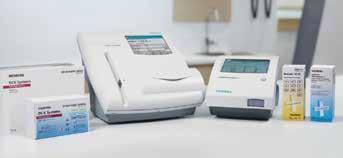
Customize your patient consultations to enhance physician-patient partnership toward improved outcomes.
